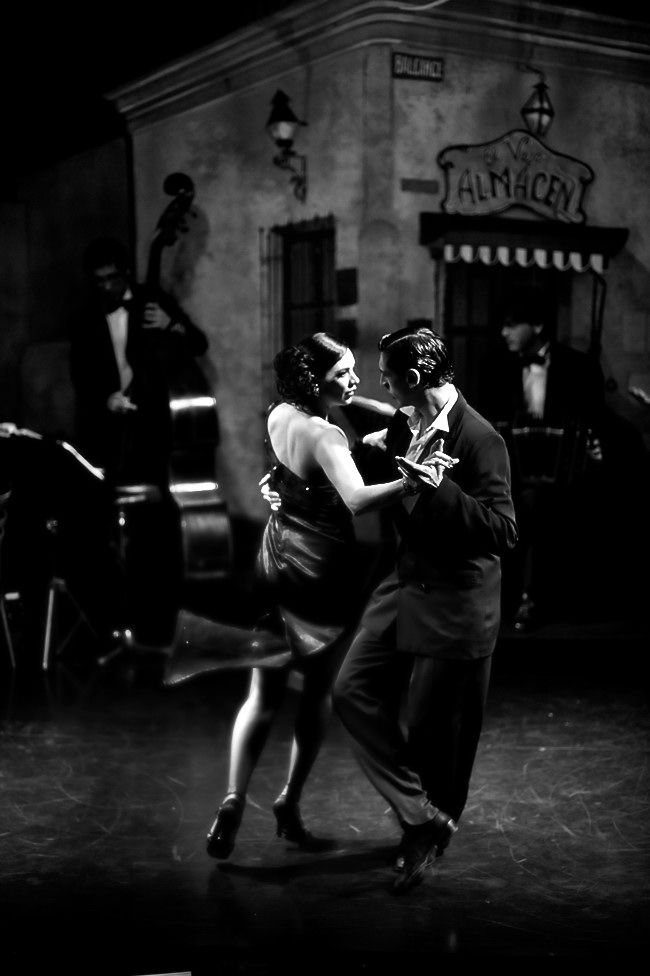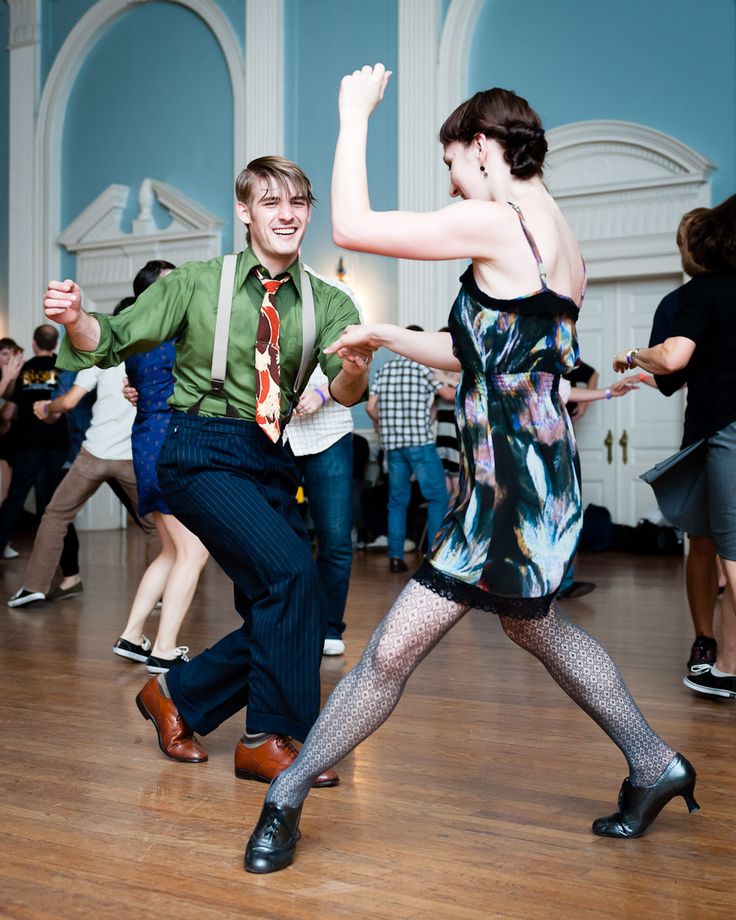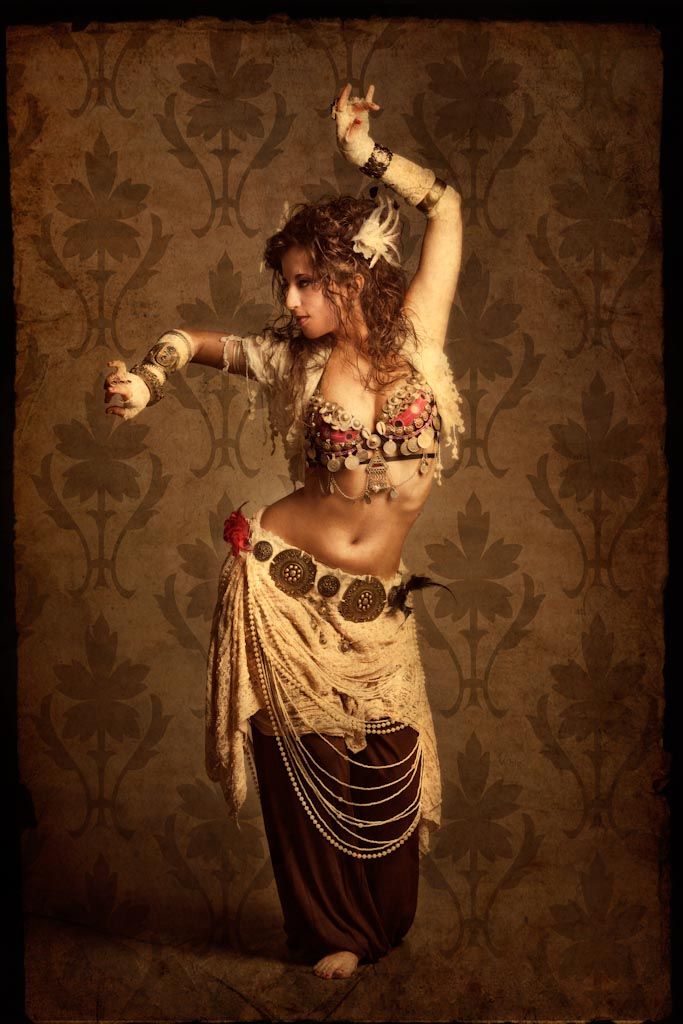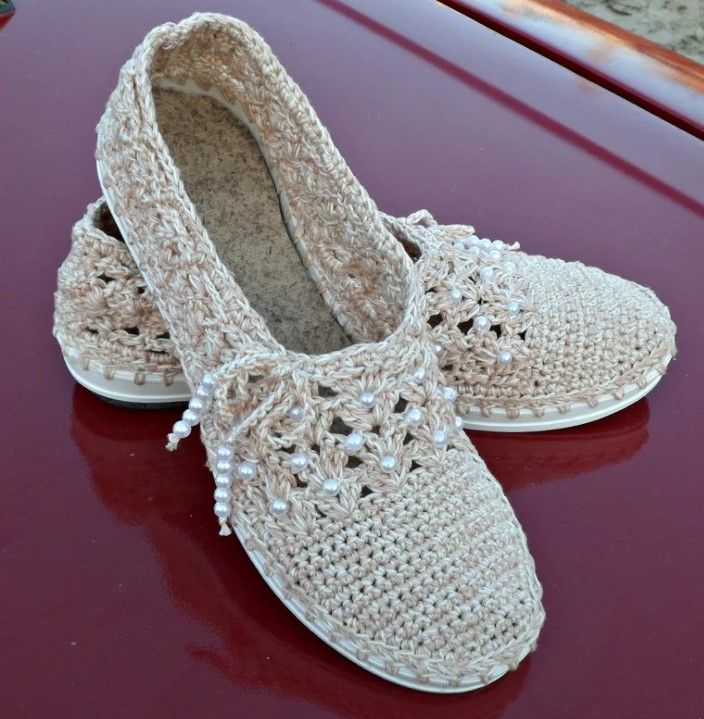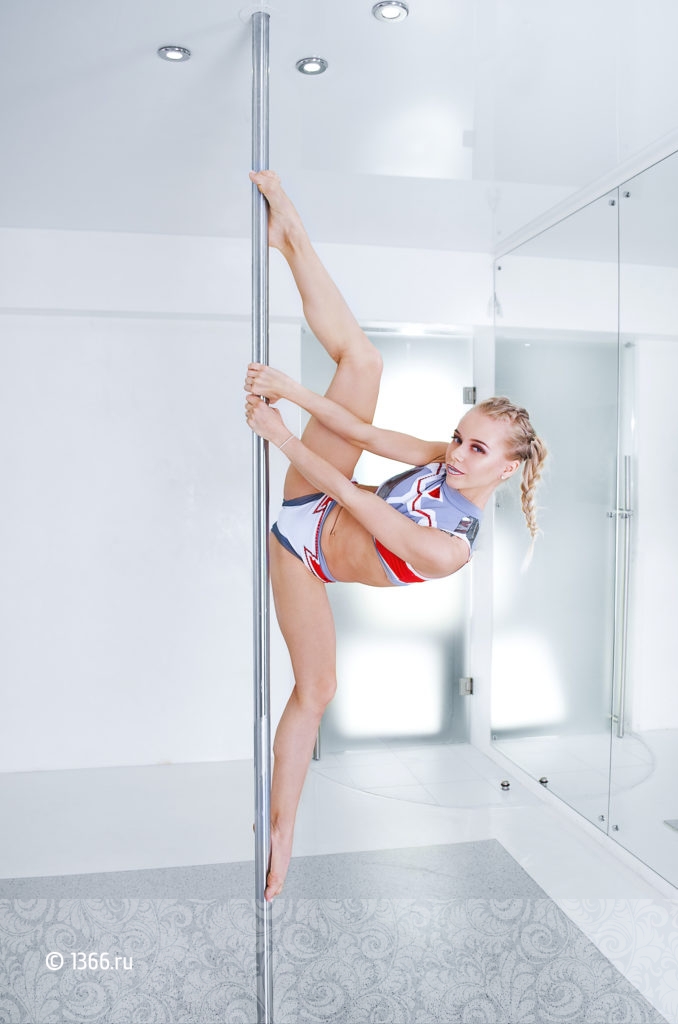How did they dance in the 50s
Teen Dances of the 1950s
Teen Dances of the 1950s
Teen Dances of the 1950s
Richard Powers
After the Swing Era and World War II, American social dancing cooled down in the late 1940s, in a shift from dance bands to concerts in night clubs. This was due to many factors — musician union fees that made big bands unaffordable, the undanceable aesthetics of bebop cool jazz, and a generation of post-war veterans with the new priority of settling down and raising a family.
But teenagers still liked to dance. Teens' dancing during the 1950s was widely varied in steps and styling. Most
of it was still swing-based, but swing had been diverging into local styles and regional variations each decade for
thirty years. In one high school it might be low and smooth; in another, wild and angular. In some areas it was
constant swing moves, while in others it was dancing with steps in place, simply holding your partner's hand, with
no swing moves. Other innovations are listed below.
One incentive for new variations was the rebelliousness of the time — teens didn't want to dance like their parents who were actively disapproving of their lifestyle, so they invented a wide range of step and style replacements. Another motivation for change was the music. Rock'n'roll simply called for different styles of dancing, some of which mirrored the strong backbeat of rock.
Terminology was just as varied as the dancing. This was called jitterbug, or swing, Lindy, the rock'n'roll, boogie-woogie or Bop. The word Bop was new then, so almost everything was called the Bop. But that word usually referred to a family of low swiveling Charleston-like steps danced in place, sometimes without a partner.
Some teens sought out African American sources for new steps and styles, sometimes from their black maids or from the
cooks at a summer camp, and especially from black teens at high school and local dances, which started to become possible
after a 1954 desegregation ruling.
Another source of new dance styles was from television. Daily soap operas were finished by 3pm, and local stations needed programming to fill the void until evening shows began. Since teenagers got home at that time, local stations hired radio DJs to play popular teenage music as cameras televised teens dancing. One of the first was Bandstand on Philadelphia's WFIL-TV (1952) hosted by former radio DJ Bob Horn. When he was fired after a drunk driving arrest in 1956, Dick Clark was selected as his replacement.
The increasingly wide regional diversification of dance styles reversed on August 5, 1957, when Clark convinced ABC
to broadcast his show nationally, becoming American Bandstand. Suddenly teens from coast to coast were seeing and
copying the way the kids in Philadelphia danced, and that regional style soon became a national dance style. Three
years later, the same thing would happen with the Twist, and from then on, teenagers got most their dances from television.
Other dances: In addition to the many styles of swing, there was also the Stroll, the solo version of Bop, Chalypso (American Bandstand's name for teen cha-cha), the line dance Madison (soon followed by the Hully-Gully), the Bunny Hop, various kinds of slow dancing, and more. The dance later known as the Twist was also done by teens in the mid-fifties, years before Chubby Checker made it a hit in 1960. (Watch the 1957 film Rock Baby Rock It for a good example.)
Some specific changes made to swing by 1950s teens
As a reference point, the most common style of swing at the beginning of the 1950s was:
Counts 1-2: Take a step, to walk through a swing move.
Counts 3-4: Take another step, to finish the swing move.
Count 5: Facing partner, rock back, in place.
Count 6: Replace weight forward, in place.
Timing is slow-slow-quick-quick, 6-count swing.Some began with the rock step.
With slower music, the two walking steps would be replaced by triple steps.
Changes made by teens in the 1950s:
Change 1) The walking steps were replaced by a tap-step, matching the strong backbeat of rock music.
Change 2) Side-close-side triple steps were replaced by hook-replace-side triples, with the strong side step emphasizing the backbeat.
Change 3) The tradition of executing one swing move after another was often replaced by mostly dancing in place, holding one or both hands, with fewer swing moves.
Change 4) Push off with one hand, drifting back away from partner on counts 1-4. Then walk forward to your partner on counts 5-6. (Shown at left.) This replaced the rock step with walking forward.
Change 5) Some teens danced in place on counts 1-4, then traveled forward through a
swing move on 5-6, or 4-5-6.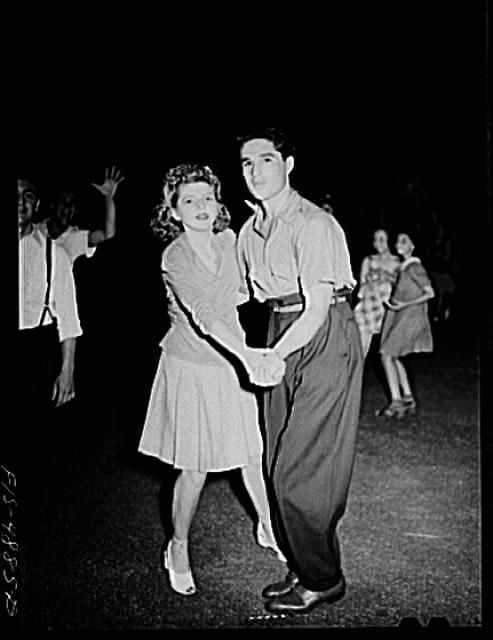 This turned the figure inside-out — stationary where it used to travel, then traveling
where it used to rock-step in place.
This turned the figure inside-out — stationary where it used to travel, then traveling
where it used to rock-step in place.
1) Tap in place
2) Step to side
3) Tap 2nd foot in place
4-5-6) Walk forward through a swing move.
A fancier version, in triple-time, shown by several fifties teens:
1) Tap in place
2) Step to side, backing away from partner
3&4) Step back on 2nd foot, close back taking weight, step forward on the 2nd foot.
5-6) Continue walking forward 2 steps, through a swing move.
Note: The 1970s Latin Hustle is exactly this same step. The version above it became the American Hustle.
This also became Sugar Push in West Coast Swing. Today WCS dancers usually begin with the
above 5-6, with the Follow walking forward to him before the same 1950s push-off on the 1,2,3&4 above.
Change 6) While some rock and pop music continued the triple "swung" feeling of blues and big band music, teenagers also danced to straight 4/4 music (similar to cha-cha rhythm) — an innovation from the 1950s which continued into 1970s disco, and then West Coast Swing.
All six of these changes continued when 1950s teen swing became the Hustle during the 1970s. Some believe that the Latin Hustle was created by Hispanics, from Cuban and Puerto Rican dances. But it was the 1950s rock'n'roll teenagers who invented all of these changes. New York Latinos do deserve credit for keeping this teen swing tradition alive from 1960 to the 1970s, while adding some of their own style, until it was reignited by the Disco scene.
All of these changes also continue today in West Coast Swing. Contrary to claims on some WCS web pages, 1950s
teenagers deserve the credit for many of the fundamental innovations that later defined West Coast Swing.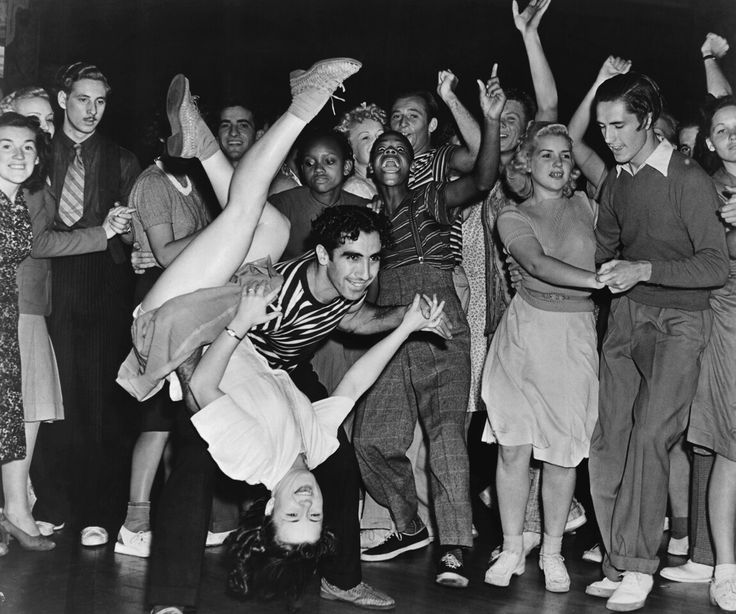
— Richard Powers
The most loved 1950s dance styles
The fabulous 1950s represent a real watershed in the history of dance: the dances of the decade were fun and innovative and reflected the evolution of the times.
The spread of television allowed millions of viewers to see their favorite songs performed for the very first time, and consequently also pick-up the dance steps that accompanied them.
It is precisely for this reason that certain dances acquired an unprecedented popularity, dances such as Rock’n’Roll (a teenage evolution of the Jitterbug and Swing dancing), the Madison, the Stroll, and the Hand Jive.
Here is an overview of the most popular music and 1950s dance styles.
1950s Music for dancing
The 1950s represented an exciting period for music, and consequently music for dancing was rich and manifold and provided a diverse soundtrack for the most popular dances of the decade.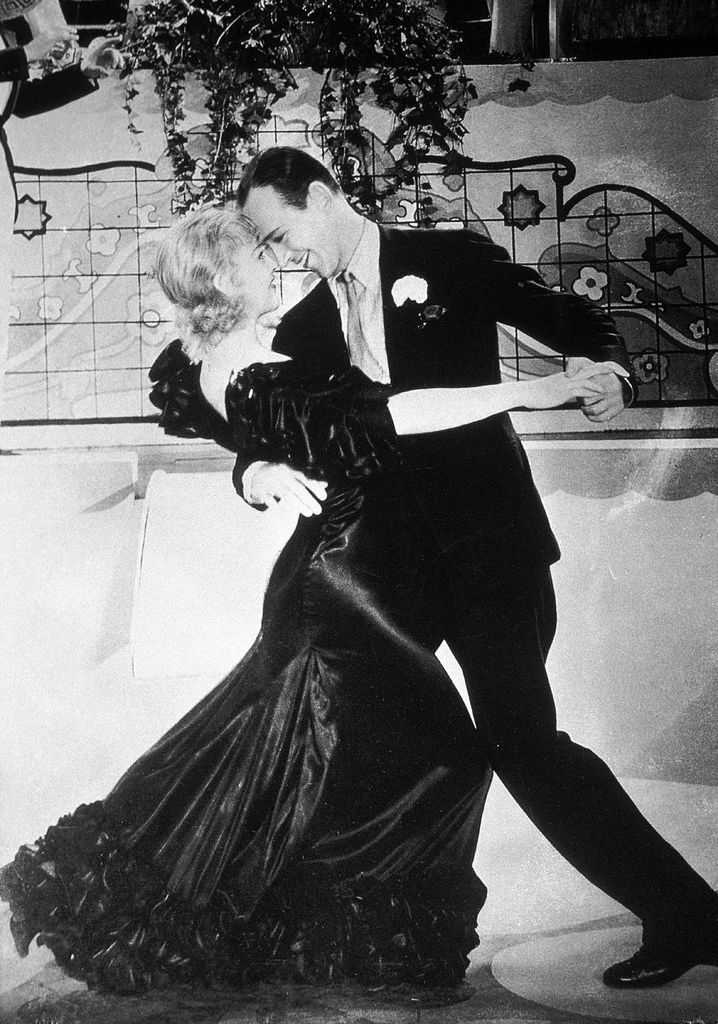
Musical styles evolved rapidly with the birth of Rock‘n’Roll, and inevitably dance styles developed and varied to adapt to the changes in the music. The presence of a TV set in every family home also provided young people with the opportunity to learn new dance styles very quickly.
- Swing
Swing became popular and achieved commercial success at the end of the 1920s as a somewhat diluted evolution of Jazz. It experienced its height of popularity in the 1930s and 1940s (suitably referred to as ‘The Swing Era’) with the rise of Big Band Dance Orchestras, led by and featuring both black and white musicians.
In the 1950s however, the popularity of Big Bands and Swing music declined, and while some Big Bands continued to find work as studio orchestras for TV or radio productions, essentially they became the backing bands to a new (and considerably less swinging) ‘Pop’ sound. Vocalists took centre stage and singers such as Frank Sinatra, Dean Martin, and Judy Garland stepped into the spotlight.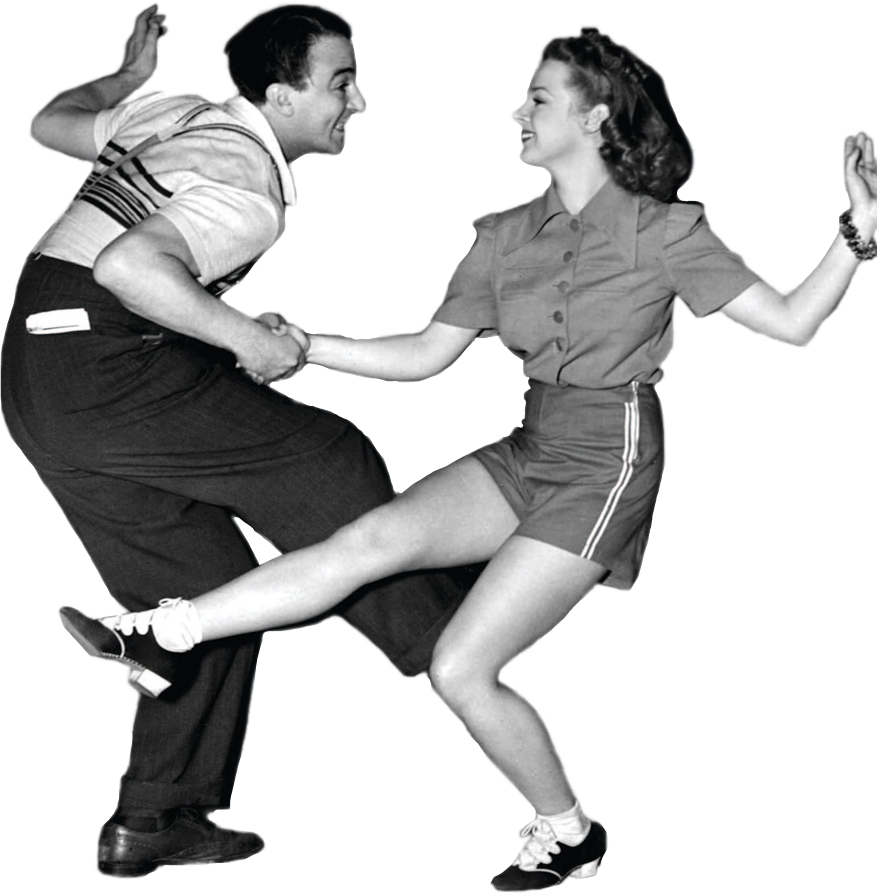
- Jazz
In New Orleans at the end of the 19th Century, ‘Founding Father’ Buddy Bolden alongside fellow Afro-American musicians fused together ragtime, blues and gospel sounds and improvised rhythms during performances to create a brand new genre of music – Jazz. Jazz has remained popular in its various guises and evolutions for well over a century.
Throughout the 1920s, 1930s and 1940s it inspired many new styles and genres including Swing and Bebop, and at the beginning of the 1950s Jazz entered its ‘Cool’ phase. The music was calmer, more loungey, and featured softer and longer melodies. By the end of the decade however, some musicians began to reject the traditional norms and structures of Jazz in favour of an improvisational and experimental ‘free-jazz’ style (which would later become known as Avant Garde Jazz). Lester Young, Charlie Parker, Dizzy Gillespie, Miles Davis, John Coltrane, and Nina Simone were some of the most popular Jazz artists of the 1950s.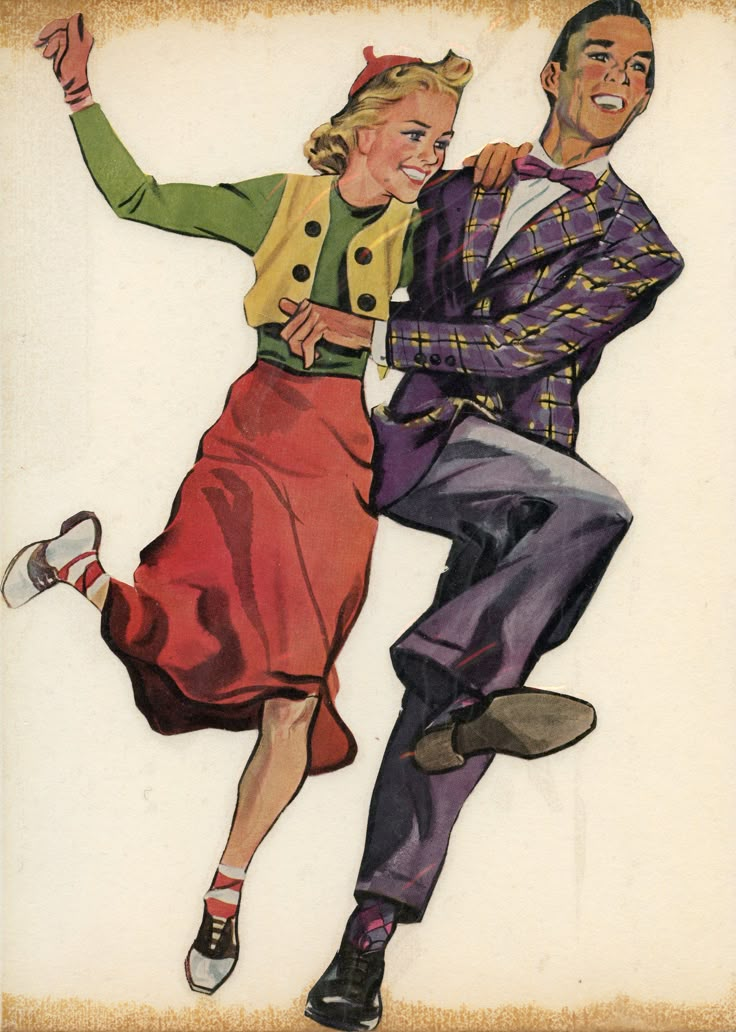
- Blues
Blues is thought to have originated in the Southern States of America after the American Civil War, however like Jazz, it wasn’t really documented until the turn of the 20th century. Also like Jazz, its roots are thoroughly African-American. This lyrical yet melancholic genre of music inspired many different styles from Delta Blues to Country Blues to West Coast Blues.
In the 1950s the Blues infiltrated the ‘mainstream’. The mass migration of African-Americans after the end of World War II and a general nationwide increase in income helped the Blues travel out of rural areas and into cities like Chicago and Memphis. Some styles favored the harmonica (blues harp), and others the electric guitar (electric blues), and some styles got labeled as ‘Rhythm & Blues’. Iconic artists of the decade included the likes of Muddy Waters, B.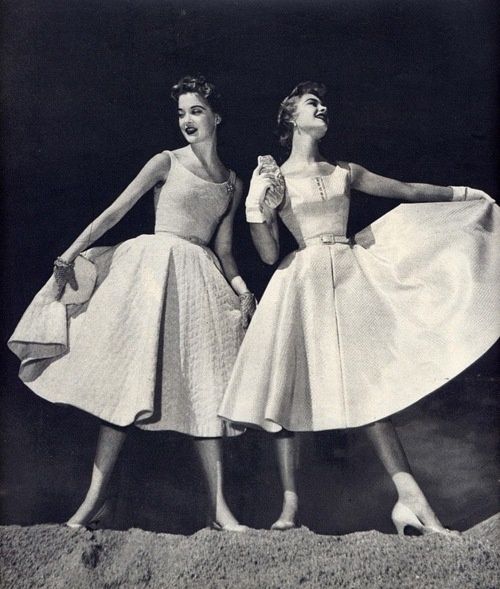 B. King, John Lee Hooker, Chuck Berry, T-Bone Walker, Howlin’ Wolf, Willie Dixon, Jimmy Reed and Bo Diddley.
B. King, John Lee Hooker, Chuck Berry, T-Bone Walker, Howlin’ Wolf, Willie Dixon, Jimmy Reed and Bo Diddley.
- Rock’n’Roll
Rock’n’Roll was essentially an amalgamation of several musical genres: primarily Blues, Country and Bluegrass, and also Jazz and Gospel. Thanks to artists like Chuck Berry, Little Richard, Jerry Lee Lewis and the King of Rock’n’Roll himself, Elvis Presley, the genre had an immediate impact on the lives of its listeners.
Rock’n’Roll in the 1950s (and indeed today) was not just a musical genre, it was a lifestyle and represented a new way of looking at the world. It affected families, it influenced behaviour, language, politics, inspired fashion, and even influenced the Civil Rights movement. It’s rhythm and format is distinct and yet at the same time distinctly indefinable, thanks to its rich and manifold nature. Rock’n’Roll was a musical revolution that rocked the nation, literally.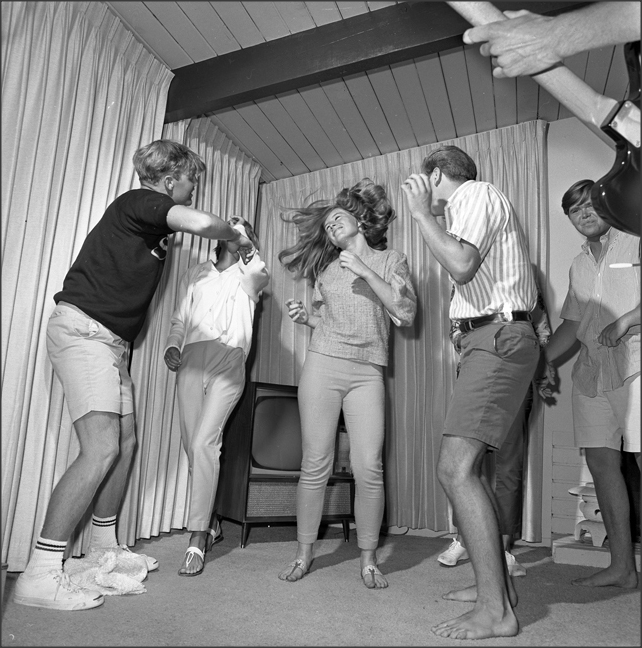
- Rockabilly
Rockabilly is a musical genre that developed around the beginning of the 1950s in the southern United States. Its name blends ‘Rock’n’Roll’ and ‘hillbilly’, and the style of music is often categorized as a sub-genre of Rock’n’Roll with heavy Country music influences and links to Bluegrass, Jazz, Boogie Woogie and Rhythm’n’Blues.
The early recordings of Elvis Presley alongside many of the ‘Sun’ artists in the early 1950s were considered to be ‘Rockabilly’. The bands were small and usually limited to a couple of guitars and a double bass, accompanied of course by vocals. The recordings were rough and ready and the vocals often added that Country twang. Unlike Rock’n’Roll and Swing however, Rockabilly featured predominantly white artists such as Carl Perkins, Johnny Cash, Sonny Burgess and Jerry Lee Lewis.
- Caribbean Craze
It would be remiss not to mention the Latin American music craze that hit the 1950s hard with Mambo, Cha Cha Cha, Rumba, and Calypso rhythms infiltrating the airwaves and even diffusing into the Rock’n’Roll and Pop music of the day. The lively Cuban rhythms and rich musical sounds made for great dance steps and popular artists included Pérez Prado, Tito Puente, Xavier Cugat and Tito Rodrìgues.
The lively Cuban rhythms and rich musical sounds made for great dance steps and popular artists included Pérez Prado, Tito Puente, Xavier Cugat and Tito Rodrìgues.
The most famous and popular 1950s dance styles
The world of 1950s dance reflected the evolution of the times: they were innovative, enthusiastic, and fun, just like the 1950s.
Partner Dances
Rock’n’Roll
Rock’n’Roll is pretty much a blanket term for all of the dances that were danced to rock’n’roll music in the 1950s. The terminology can be confusing, as there were so many dance variations from State to State, and even from ballroom to ballroom, and on top of that, modern usage of some dance terms have a whole different meaning altogether today. So while it’s understandable that definitions of the dances will vary, it can be said that the Swing dances of previous years undeniably developed and evolved to the new rhythms and powerful beats of Rock’n’Roll during this revolutionary decade.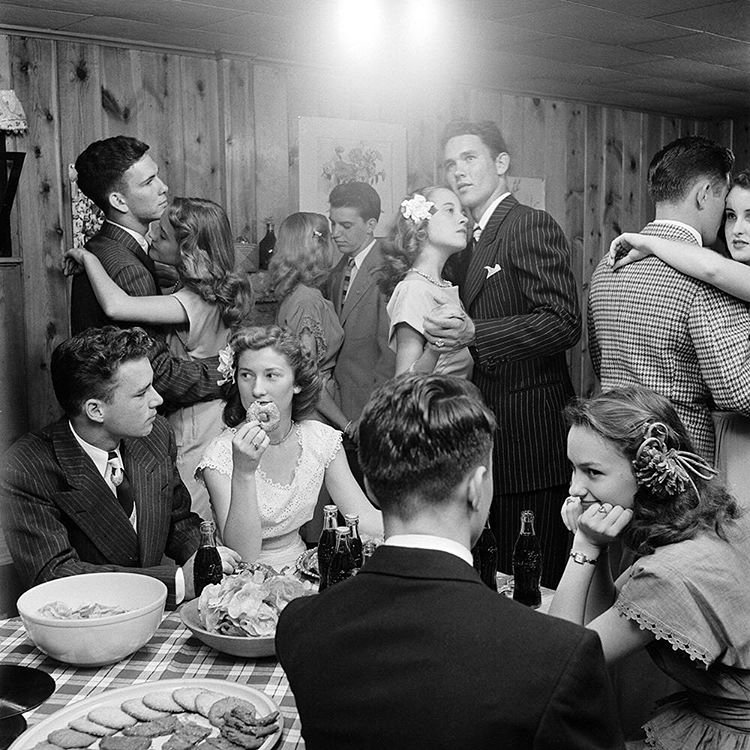
Jitterbug (also known as Jive)
The term Jitterbug dates from the 1930s, and referred to both the dancer and the dance. However it is generally agreed that the dance was a simplified version of the Lindy Hop, featuring fewer steps, and therefore making it easier to dance to faster music. As a dance it transitioned very easily from Swing to Rock’n’Roll music, and films such as Rock Around The Clock and Rock, Rock, Rock showcased the dance to a new generation of younger dancers eager to get on the floor.
Boogie Woogie
Boogie Woogie music was particularly popular in the 1920s, however the dance originated and flourished in the 1950s in direct response to Rock’n’Roll music. Like the Jitterbug, it has its roots in Swing, and is another off-shoot of the Lindy Hop. While it is certainly adept to Boogie Woogie piano rhythms, it is also associated (although not exclusively) with energetic, driving up-tempo rocking tunes.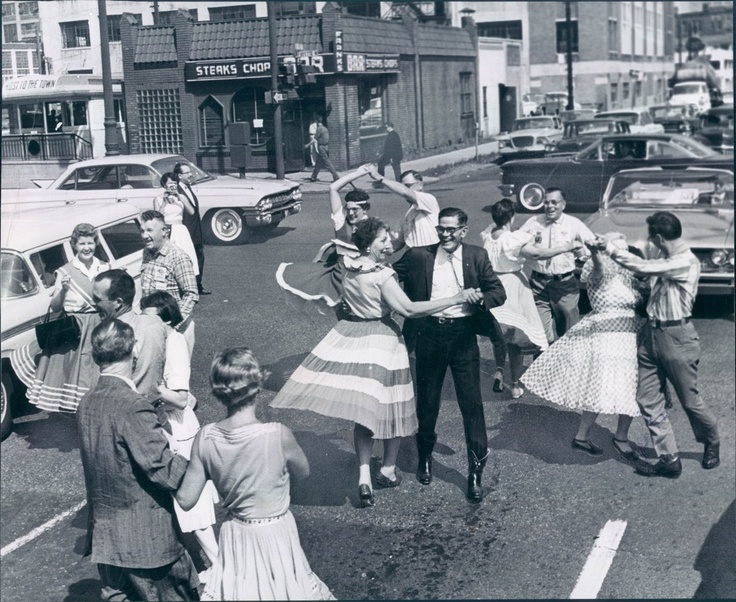 In the 1950s this dance variation would probably just have been known as ‘Rock’n’Roll’, however what we call Boogie Woogie today is also sometimes referred to as East Coast Swing.
In the 1950s this dance variation would probably just have been known as ‘Rock’n’Roll’, however what we call Boogie Woogie today is also sometimes referred to as East Coast Swing.
Learn to dance in “vintage style”, take a look at our Dance Academy. Start from scratch or rekindle an existing passion for dance with our internationally renowned teachers.
Calypso
As America went gaga for the exotic rhythms of the Caribbean in the 1950s, it goes without saying that interest in dances such as the Mambo, Rumba and Cha Cha Cha also increased. The ‘Chalypso’ is the name that the iconic broadcast American Bandstand gave to the simplified version of the Cha Cha Cha that was becoming popular amongst teenagers. It remained a partner dance, but was very simple and playful, and the steps were performed out of hold.
Novelty Dances
Bunny Hop
The Bunny Hop was a classic early 1950s party dance: it was energetic and full of jumps, but very simple and repetitive, which made it perfect for parties.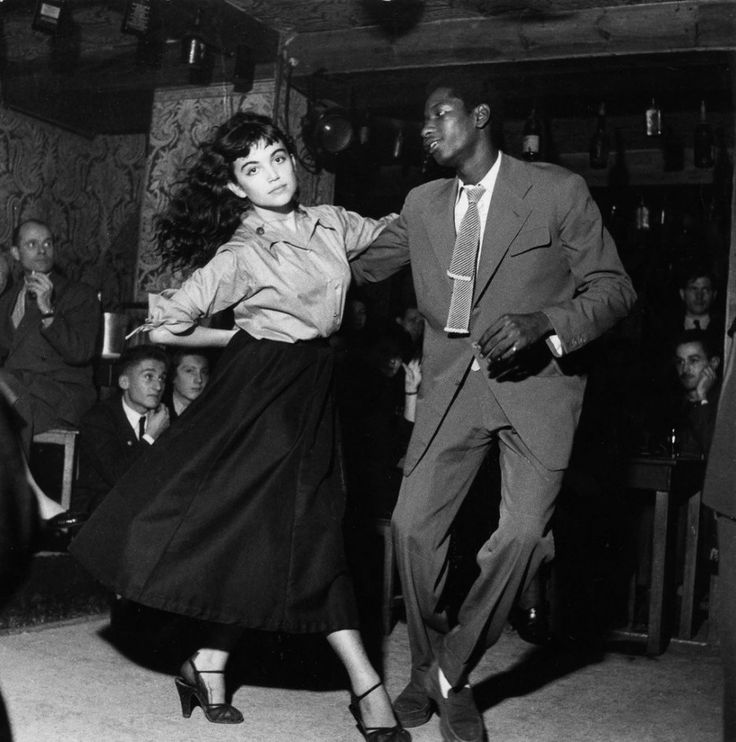 Dancers formed a line (imagine a conga line) and performed a short sequence of side-steps and jumps forward and back to the music. The dance routine featured on TV and even had its own song, with some versions including the instructions for the dance.
Dancers formed a line (imagine a conga line) and performed a short sequence of side-steps and jumps forward and back to the music. The dance routine featured on TV and even had its own song, with some versions including the instructions for the dance.
Hand Jive
In 1957 filmmaker Ken Russell recorded teenagers dancing the ‘Hand Jive’ in the basement of a London coffee bar. The venue was so crowded that there wasn’t enough room to actually dance properly, so they invented a rhythmic clapping choreography for their hands instead, which they could do without a partner and sitting down. It didn’t take long for the craze to reach the States and just one year later in 1958 American artist Johnny Otis had even recorded a song entitled ‘Willie and the Hand Jive’ with a notably recognisable Bo-Diddley riff.
Twist
Yet another novelty dance sensation in the 1950s was the Twist. Interestingly enough, just like the Hand Jive, songs were written in reaction to the dance craze that was inspired by and danced to Rock’n’Roll music, and not the other way round.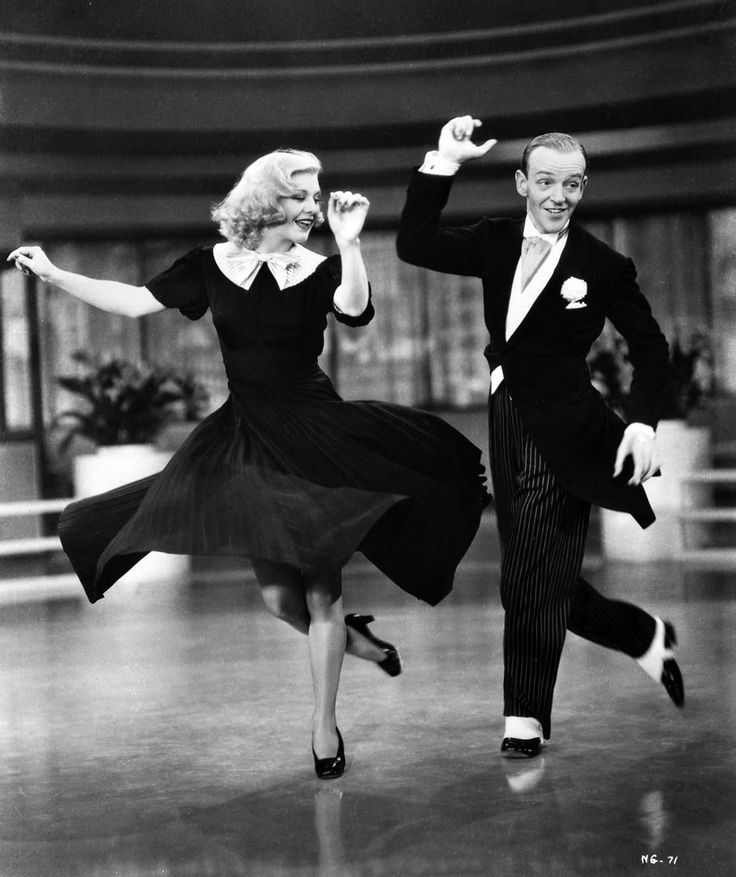 In 1959 both Hank Ballard and Chubby Checker released tracks entitled ‘The Twist’ after the dance had already caught on. The dance itself is very simple; it is performed alone (without a partner) and is based on the swiveling motion of the hips and ankles that have the effect of ‘grinding’ into the floor. The torso has limited movement and the arms mimic the swiveling action of the hips.
In 1959 both Hank Ballard and Chubby Checker released tracks entitled ‘The Twist’ after the dance had already caught on. The dance itself is very simple; it is performed alone (without a partner) and is based on the swiveling motion of the hips and ankles that have the effect of ‘grinding’ into the floor. The torso has limited movement and the arms mimic the swiveling action of the hips.
Group dances in 1950s
With the decline of Swing and Big Band Orchestras, dance halls in the 1950s experienced a moment of crisis. However American teenagers still loved to dance, and towards the end of the decade group dances experienced a wave of popularity (thanks in part to their appearances on television). It was something new and different from the more established partner dances, and they were generally simple and easy to learn, which made them perfect for younger dancers.
The Stroll
The original Stroll emerged in the late 1950s and consisted of a line of women facing a line of men, forming a passageway down which couples ‘strolled’ to the music before parting and joining the end of their respective lines again.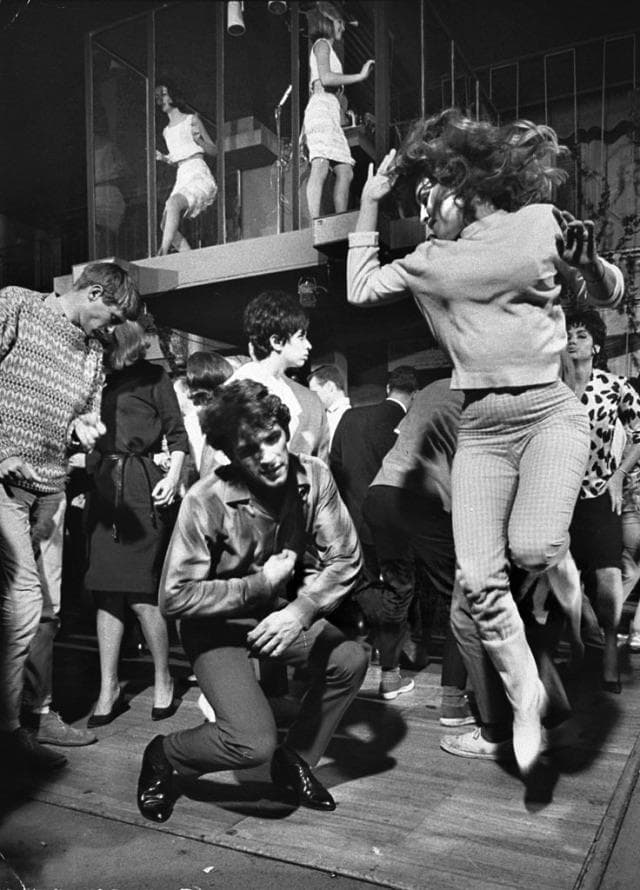 American Bandstand broadcast the dance being performed to the song of the same name by the group The Diamonds in 1957 and the rest, as they say, is history. The Stroll is still danced at events today but with significant variations from the original.
American Bandstand broadcast the dance being performed to the song of the same name by the group The Diamonds in 1957 and the rest, as they say, is history. The Stroll is still danced at events today but with significant variations from the original.
The Madison
The Madison emerged as a ‘line dance’ in the late 1950s in Ohio. It is danced without a partner, in lines on the dance floor, and follows a set choreography of steps and moves. In 1959 Ray Bryant released ‘It’s Madison Time’ in which the steps are called, and today the dance is commonly associated with this song. Like the ‘Twist’ and the ‘Hully Gully’, the dance went on to experience an even higher level of success in the 1960s after its appearance on television.
Hully Gully
The exact origins of the Hully Gully are unclear. History suggests that a dance called the Hully Gully dates as far back as the 1920s, however the dance referred to here is an ‘unstructured’ group dance that is commonly believed to date from 1959. This coincides with the release of the song ‘(Baby,) Hully Gully’ by the Olympics that vaguely described the actions of the dance that include ‘shaking’ the shoulders and ‘wiggling’ the knees.
This coincides with the release of the song ‘(Baby,) Hully Gully’ by the Olympics that vaguely described the actions of the dance that include ‘shaking’ the shoulders and ‘wiggling’ the knees.
In Conclusion
The music and 1950s dance styles are not just a thing of the past.
Rock’n’Roll is alive and kicking, and thanks to the millions of people all around the world that are captivated by the rhythms, dances, fashions, and living history of that incredible and world-changing decade, the music and 1950s dance styles are more alive today than ever.
It is a chapter of history that remains open, and continues to give joy at dance events all around the world.
Learn to dance in “vintage style”, take a look at our Dance Academy. Start from scratch or rekindle an existing passion for dance with our internationally renowned teachers.
Dance in the style of the 50's - History Of Dance
Dance of the 1950's
Dance in the style of the 1950's is a true reflection of the evolution, innovation and fun that characterized that era. With steps that evolved from swing, like the jitterbug and bop, and moves that anyone could do, like the bunny hop and walk, 50s dance style isn't going anywhere. Whether you're rockabilly ready or heading to the nearest rockabilly club, here are a few styles you might want to try.
With steps that evolved from swing, like the jitterbug and bop, and moves that anyone could do, like the bunny hop and walk, 50s dance style isn't going anywhere. Whether you're rockabilly ready or heading to the nearest rockabilly club, here are a few styles you might want to try.
Boogie-woogie
As a dance style, boogie-woogie included any kind of fast swing dance and was also called "jump swing". Boogie-woogie was usually danced to blues and boogie-woogie music at an uptempo. This type of fast dance involved jumping, bouncing, stomping, and even flying with the feet, all done at considerable speed.
Related Articles
- Ballroom Dance Photos
- Dance Studio Equipment
- Photos of ballet dancers
Elvis Presley, Jerry Lee Lewis and other popular singers of the time developed their own version of rockabilly by combining blues and boogie-woogie.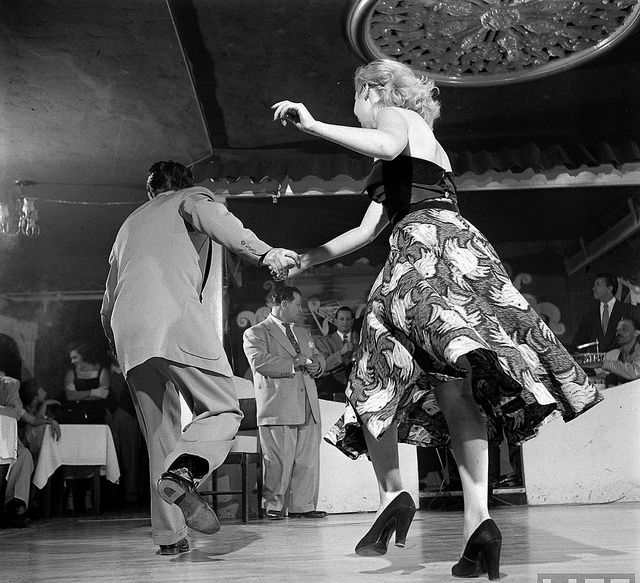 In Europe, people still dance boogie-woogie, although it has become close to jive and includes elements of both East and West Coast swing.
In Europe, people still dance boogie-woogie, although it has become close to jive and includes elements of both East and West Coast swing.
Bop
Bop dance style comes from the jitterbug and East Coast swing of the 1950s. The term "bop" actually comes from the word "bebop", those fabulous 40s jazz tunes; however, he did not dance to be-bop, but to the much faster swing, rockabilly, and rock and roll songs of the era, such as those of Bud Powell, Fats Waller, and Gene Vincent.
The bop used many of the same movements as the swing, including partners moving around each other, but was usually performed with almost no touch and much faster. The more light-hearted, Charlestonian edgy moves and independent dance style of Bop also encouraged dancers to take up solos. English dance clubs were and still are filled with people doing bop.
Bunny jump
Bunny hop became a classic dance dance in the early 1950s. It was originally danced to Bunny Hop, Ray Anthony, which came out in 1952 and had all the instructions on what to do. Do a bunny hop, all you need is the energy to jump back and preferably a few people to form a conga line.
Chalypso
Toward the end of the 50s, the American stage came up with a name for the simplified cha-cha-cha steps that teenagers danced to swing rhythms: Chalypso. However, the dance style took its name from a string of Caribbean hits that took over the US by the end of the decade. At 19In 1956, Harry Belafonte released his Grammy Award-winning album Calypso , and many more Calypso releases followed with the album's success.
While Calypso's songs were usually danced with a mixture of rumba and samba steps. Somewhere in the future, this was watered down and reinterpreted by young people as a simplified cha-cha-cha.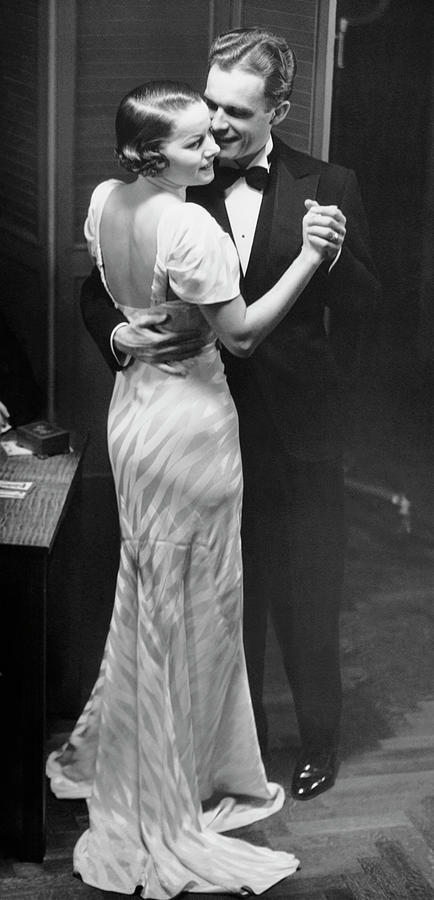 This fun and easy dance style was perfect for dancing to mid-tempo swing songs - not too fast and not too slow.
This fun and easy dance style was perfect for dancing to mid-tempo swing songs - not too fast and not too slow.
Jitterbug
The term "jitterbug" originated in the early 1930s and eventually came to be used as a general term for swing in general. Movies such as Rock Around the Clock, Rock, Rock, Rock, and Girl Can't Help It feature the Jitterbug dancing. By the end of the 1950s, young people began to call fast dances by name. Learning how to Jitterbug is easy.
Jive
Jive, like Jitterbug, is a type of swing dance. His ancestry is American, heavily influenced by Latino and African American groups, and is known for his speed and fun. Jive is now one of the official forms of Latin American dance in the competition arena and is danced all over the world in rockabilly joints. Read more about the history of Jive dancing and detailed instructions here.
Madison Line Dance
In the late 1950s and early 1960s, the Madison line dance became very popular. The simple dance line and steps that the dancers were called upon were a huge success. Madison's madness spawned several recordings of songs specially created for the dance, featuring Al Brown's "Madison" and Ray Bryant's "Madison Time". Top 40 Billboard. It was so popular that the 1988 film Hairspray featured the dance, and it became one of those recurring features in movies and TV shows that depict popular dances 1950s.
The simple dance line and steps that the dancers were called upon were a huge success. Madison's madness spawned several recordings of songs specially created for the dance, featuring Al Brown's "Madison" and Ray Bryant's "Madison Time". Top 40 Billboard. It was so popular that the 1988 film Hairspray featured the dance, and it became one of those recurring features in movies and TV shows that depict popular dances 1950s.
To perform Madison, the dancers line up and follow the movements called the song. It's simple and fun!
Rock and roll
Rock and roll is actually a swing dance. East Coast Swing, West Coast Swing, Jive and Jitterbug have all come to be known as a form of rock and roll dance, largely through the film industry and the media. So it was really rock 'n' roll and various forms of swing were used to dance to it.
Some notable rock and roll songs include Gene Vincent's Be Bob a Lula, Little Richard's Tutti Frutti, Bill Haley's Rock Around the Clock, Chuck Berry's Johnny Be Goode and Great Balls.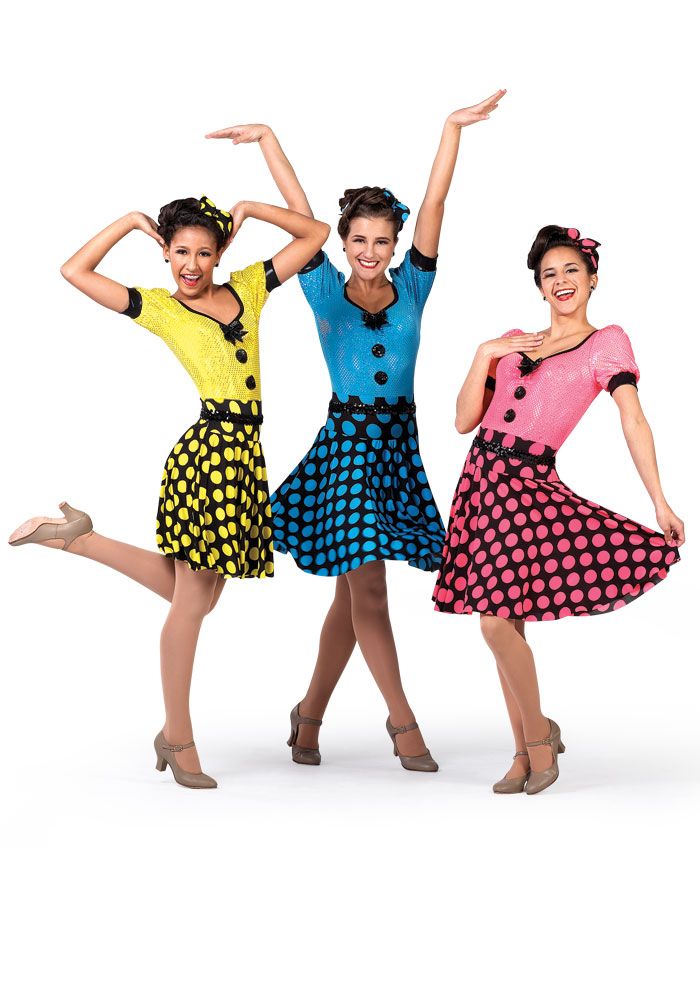 fire" by Jerry Lee Lewis. Some of the films that helped solidify rock and roll include Rockin' the Blues, Don't Knock the Rock, Rock, Rock, Rock!, Jailhouse Rock, The Girl Can. t Help It, "Indomitable Youth" and "Carnival Rock". Here is an example of a rock and roll swing:
fire" by Jerry Lee Lewis. Some of the films that helped solidify rock and roll include Rockin' the Blues, Don't Knock the Rock, Rock, Rock, Rock!, Jailhouse Rock, The Girl Can. t Help It, "Indomitable Youth" and "Carnival Rock". Here is an example of a rock and roll swing:
Walk
The walk was a staple of most dance halls in the 1950s. While this stress-free line dance was fun and easy, the Italian walk is just as easy today. This is a great way to showcase your best dance moves.
The 50s are here to stay
The fashion, fun dances and energetic revolutionary music of the 50s make this a cherished time for many. Try dancing in 1950s style and rock the night away with these steps to capture the magic of that era!
What was danced in the XX century • Arzamas
What was danced in the XX century • Arzamas
You have Javascript disabled. Please change your browser settings.
Please change your browser settings.
Two dancing worlds on one scheme: the most fashionable dances of salons and discos and the most daring phenomena of choreography in 100 years
Prepared by Irina Sirotkina, Vita Khlopova
1900s
Dancing for fun
Matchish
Dance for art 9,0003
Dance predictors Modern
1910s
Dance for entertainment
Tango
Dance
Expression Dance
Dances for entertainment 9000 9000
Dancing for Art
Modern Dance
1930s
Dancing for Fun
Lindy Hop
Dancing for Art
Neoclassical ballet
Choreographers Afro-American
19403
Dance for entertainment
Samba
Dance for art
Mers Cunningham
1950
Dance for the entertainment
rock and roll
dance dance for art
Maurice Béjart and Belgian choreographers
1960s
Dancing for fun
Twist
Dancing for art
Postmodern dance
1970s
Dance for entertainment
HASTL
Dance for art
Pina Baush
MATS EC
1980,
Dance for entertainment
Hip-hop
Dance for art
New French new French dance and non-dance
1990s
Dancing for fun
Lambada and macarena
Dancing for art
Gaga
Modern dance in England
Read about other social dances of the 16th–20th centuries in Irina Sirotkina's section “Dance of the Day”
Serenade by New York City Ballet. Choreography by George Balanchine, music by Pyotr Tchaikovsky Classical ballet reached its apogee in Marius Petipa's production of The Sleeping Beauty in 1890: it was no longer possible to create something bigger and more luxurious. Mikhail Fokin set a new direction for classical ballet, turning to a small form and canceling the plot (as in Chopiniana 1907 years). The next step was taken by Fedor Lopukhov with his plotless dance symphony "The Greatness of the Universe". Young Georgy Balanchivadze took part in this performance. A few years later, he ended up in the West, became Balanchine on the advice of Diaghilev, and then, in 1933, he moved to America, where he created a direction that eventually became known as neoclassical ballet. However, if you read European researchers, they call another emigrant from Soviet Russia, Serge Lifar, the father of neoclassical ballet. Both of them worked with the vocabulary of classical ballet, simplified costumes and scenery, gravitated towards small forms and the absence of a plot, so, perhaps, it is not so important which of them was the first, especially since their careers in the West developed simultaneously.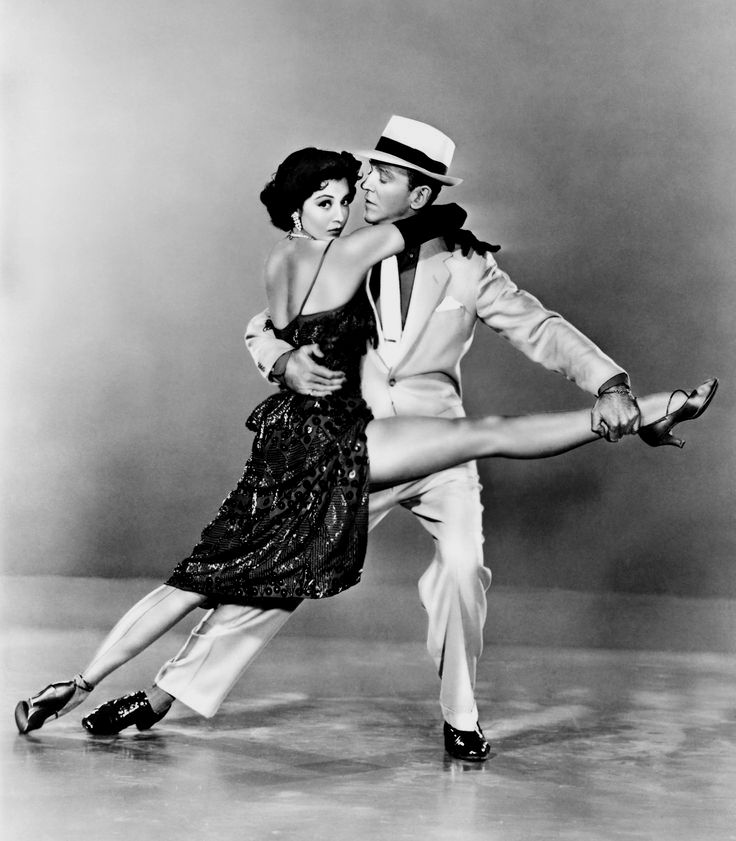 Another thing is important: neoclassical ballet is one of the most powerful trends of the 20th century. Both Maurice Béjart and Roland Petit were sometimes staged in this style, but William Forsythe and Wayne MacGregor played a truly serious role in its promotion in the 21st century.
Another thing is important: neoclassical ballet is one of the most powerful trends of the 20th century. Both Maurice Béjart and Roland Petit were sometimes staged in this style, but William Forsythe and Wayne MacGregor played a truly serious role in its promotion in the 21st century.
Principal Representatives:
George Balanchine, Serge Lifar, Jiri Kilian, William Forsythe, Roland Petit.
Key productions:
Balanchine's Serenade, Serge Lifar's Suite in White, Forsyth's Impressing the Czar.
Can you see it now:
Every major musical theater has several works of neoclassical ballet in its repertoire. In the near future, you will be able to see the work of one of the Russian neoclassical artists, Alexei Ratmansky, at the gala closing of the festival “Context. Diana Vishneva».
'}, { id: 'match', text: 'Match
Match performed by Vernon and Irene Castle. 1915 This is a fragment of an untitled silent film in which famous American actors and dancers Vernon and Irene Castle dance matchish. The music superimposed on the video is a matchish called "Dengoso" by Brazilian composer Ernesto Nazareth, recorded in the United States around the same time the film was being shot.Matchish (port. maxixe) was born in a Brazilian province in the late 1860s. The partners moved with a quick sliding step, circled and hugged every now and then - and the partner pressed the partner's back to him. For that sedate era, the dance, based on Afro-Latin rhythms, seemed fiery, "voluptuous." At the turn of the 19th and 20th centuries, matchish became popular in Rio de Janeiro, and on the eve of the First World War, a song in the rhythm of matchish was already played by all mechanical pianos in American saloons and European cafes. Fashion has also reached Russia — Vladimir Mayakovsky wrote:
'}, { id: 'premodern', text: 'And now
today
in the morning
the matchish lips hit the soul of
.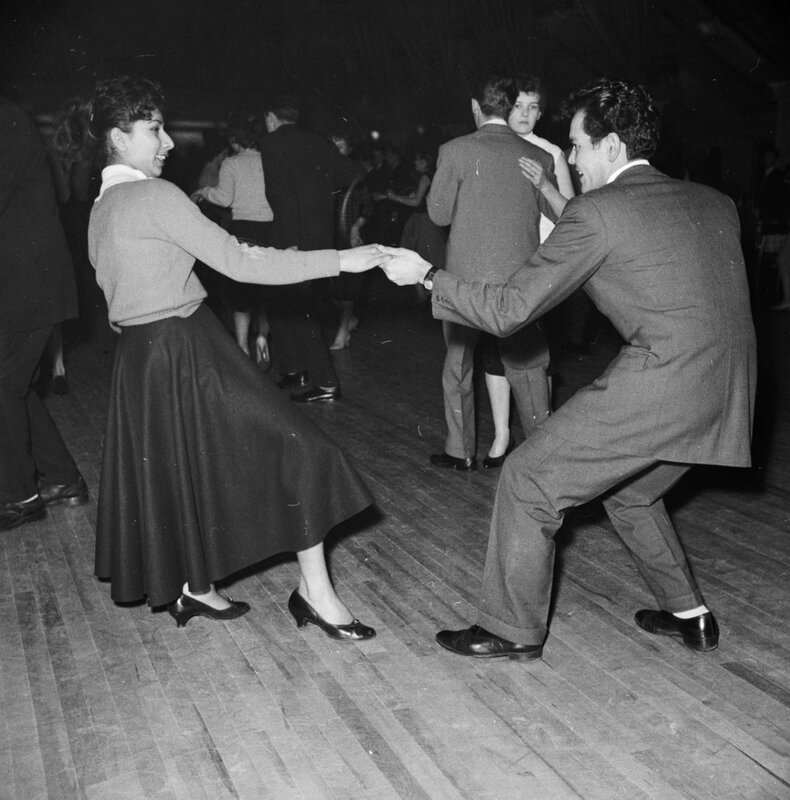
I walked twitching,
spreading my arms,
and everywhere trumpets danced on the roofs,
and each knee threw out 44!
Forerunners of modern dance (USA)
Serpentine dance, choreography by Loi Fuller It is customary to begin the history of modern dance with American modern dance. But it was preceded by the work of four independent dancers, each of whom has remained in history as a harbinger (forerunner) of modernity. Their main goal was to prove that choreography can be a serious art form, and dance is not only a show. The most famous of them, Isadora Duncan, believed that dance should develop naturally, in accordance with the personality of the performer - it is enough to listen to your body and its impulses. It became known as free dance.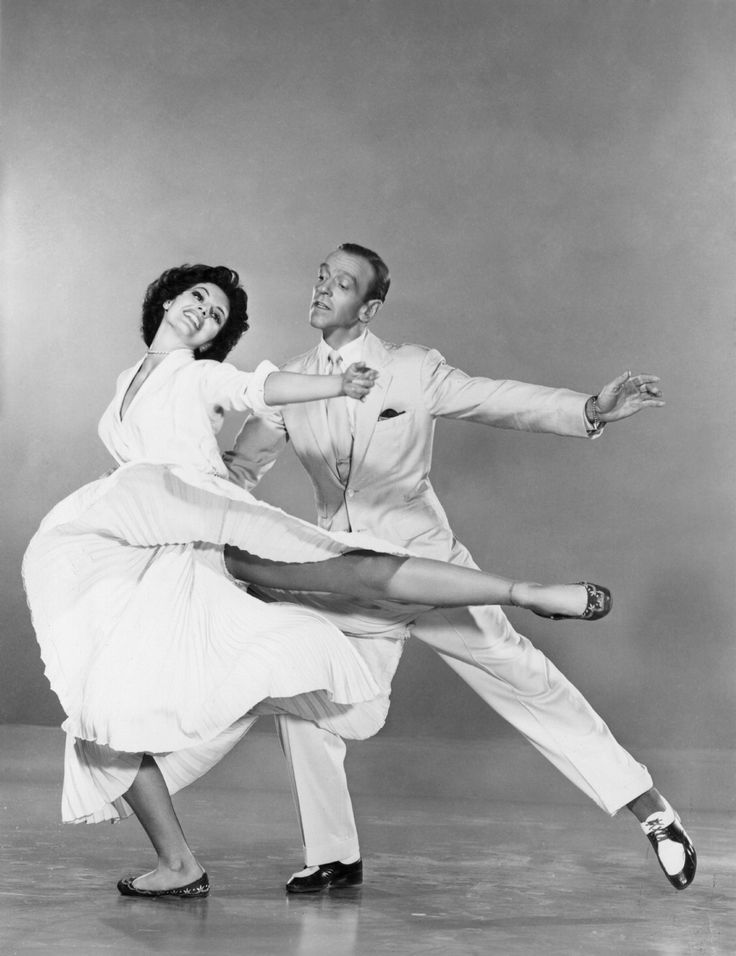 Her senior colleague Loi Fuller, who came up with dozens of ways to make light and color an important part of the choreography, had a serious influence on the development of not only dance, but also stage design. Ruth St. Denis opened Denishawn in the United States, the first school that systematically taught different types of movement, from ballet to yoga. Almost all future masters of modern dance are Denishawn graduates. In addition, her students were willingly taken to extras in Hollywood films, and some, such as Louise Brooks, became stars of silent films. The fourth harbinger is Maud Allan, whose Salome was a shock to the public of the time. In general, little is known about her style, the press of that time paid much more attention to the scandalous stories associated with her - for example, when she sued an English politician who accused her of homosexuality and connections with German spies.
Her senior colleague Loi Fuller, who came up with dozens of ways to make light and color an important part of the choreography, had a serious influence on the development of not only dance, but also stage design. Ruth St. Denis opened Denishawn in the United States, the first school that systematically taught different types of movement, from ballet to yoga. Almost all future masters of modern dance are Denishawn graduates. In addition, her students were willingly taken to extras in Hollywood films, and some, such as Louise Brooks, became stars of silent films. The fourth harbinger is Maud Allan, whose Salome was a shock to the public of the time. In general, little is known about her style, the press of that time paid much more attention to the scandalous stories associated with her - for example, when she sued an English politician who accused her of homosexuality and connections with German spies.
Chief Representatives:
Loi Fuller, Isadora Duncan, Ruth St. Denis, Maud Allan.
Key productions:
Serpentine Dance by Loie Fuller, Incense by Ruth St. Denis, Salome by Maud Allan.
Can you see it now:
Duncan's legacy is cherished, danced and studied by her followers in the US, who recently formed an association and created a website where Duncan's authentic choreography can be seen. The work of other forerunners has remained in history - although it is important to remember that all modern dance of the 20th century happened thanks to their experiences; moreover, some of their findings inspire choreographers even today - for example, echoes of Loie Fuller's visual experiments can be found in the works of the Frenchman Philippe Decoufle or the American Alvin Nicolai.
'}, { id: 'tango', text: 'Tango
Rudolph Valentino and Beatriz Dominguez dance the tango in Rex Ingram's film The Four Horsemen of the Apocalypse. 1921 The film is silent, and the music that plays here is the tango "La Cumparsita", written in 1916 by the Uruguayan composer Gerardo Rodriguez.
1921 The film is silent, and the music that plays here is the tango "La Cumparsita", written in 1916 by the Uruguayan composer Gerardo Rodriguez. Tango was born in the working class areas of Buenos Aires; one of its sources was the habanera, a Cuban folk dance. Tango quickly conquered the whole world. Not the last role in this was played by the connection of passion and violence, which was fully manifested in the "cruel" tango, or apache tango, where the macho partner bent and threw his lady, as if he wanted to finish her off. Before the First World War, tango was tamed and refined in bourgeois salons, but it retained its eroticism, the image of barely restrained desire, "flame in ice."
Tangomania took over Europe so much that the Pope issued a special bull forbidding tango. Nevertheless, the fame of tango grew - in no small measure thanks to silent cinema, in which the beautiful tangero Rudolf Valentino shone.
'}, { id: 'express', text: 'Expressionist dance (Germany)
"Monument to the Dead" staged by Mary Wigman. 1929 In parallel with America, dance also developed in Europe, but in a different scenario. The direction that arose in Switzerland and Germany at the beginning of the 20th century is called expressionist dance (Ausdruckstanz) or German modern. Dancers and choreographers, along with other philosophers and artists, were looking for ways to express a new perception of the world and new meanings through movement and interaction with space. Composer Emile Jacques-Dalcroze came up with rhythm: in solfeggio classes, he discovered that his students learn the material better if they move along with the music, and began to develop a system that correlates rhythm and movement. Rudolf Laban analyzed the movement of the body in space and invented a way to write down the dance on paper, which is still used (it is called labnotation). His students, Mary Wigman (creator of dance-rituals like "Dance Song" to the words of Nietzsche) and Kurt Joss, developed expressionist dance, referring to the difficult post-war everyday life, themes of death, violence, despair.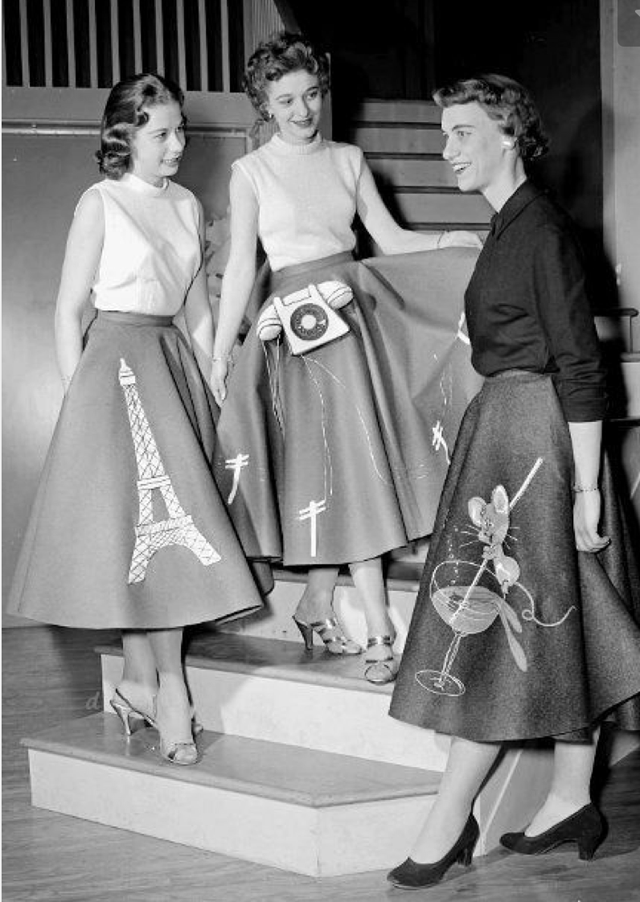
Principal representatives:
Emile Jacques-Dalcroze, Rudolf Laban, Mary Wigman, Kurt Joss, Valeska Gert, Harald Kreuzberg and others.
Can you see it now:
The work of almost all the heroes of expressionist dance has remained in history, but there are direct lines of inheritance. For example, Laban's student Kurt Joss is one of the creators of the dance theater style, which mixes dance, recitation, opera and drama. The main figure of the dance theater is Joss's student, the great dancer and choreographer Pina Bausch, whose troupe still exists.
'}, { id: 'foxtrot', text: 'Foxtrot
Video of the foxtrot edited by dance historian Walter Nelson from archival records of the 1920s and 30s There are several versions of the origin of the foxtrot. According to one of them, vaudeville director Charles Fox invented it - and the dance is named after him. According to another version, the fox trot (eng. fox trot - “fox step”) refers to a group of so-called animal dances that appeared in America before the First World War. These are cheerful pair dances that danced to ragtime (music of African Americans from the southern states and the Midwest), imitating the movements of animals and birds (there were, for example, dances "Turkey Step", "Rabbit Embrace", "Grizzly Bear" and so on.).
According to another version, the fox trot (eng. fox trot - “fox step”) refers to a group of so-called animal dances that appeared in America before the First World War. These are cheerful pair dances that danced to ragtime (music of African Americans from the southern states and the Midwest), imitating the movements of animals and birds (there were, for example, dances "Turkey Step", "Rabbit Embrace", "Grizzly Bear" and so on.).
The foxtrot is based on a simple step forward, backward or sideways. Two "long" or "slow" steps are replaced by two short and fast ones. Therefore, the foxtrot is sometimes considered a combination of a slow one-step (one-step) with a fast two-step (two-step).
In the 1920s, the foxtrot became popular all over the world, moving to Europe and Russia - for example, the poet Andrei Bely in the early 1920s studied foxtrot in dance classes in Berlin.
'}, { id: 'modern', text: 'Modern Dance (USA)
Aria on the G String by August Wilhelmy with choreography by Doris Humphrey. 1934Starting from the work of harbingers, the creators of Art Nouveau were looking for a dance language that could speak not only about feelings and natural phenomena, but also about serious issues that worry the author and his contemporaries - about love, war, injustice, impotence.
Four choreographers, the so-called great four, are called the founders of modern dance. Three of them were graduates of the Ruth St. Denis Denishawn School, but by the end of 1920's already worked independently. And very successful. The most famous of them is Martha Graham. She created her own technique, which is based on the change of contraction and relaxation ("contraction - release"), the release of the dancer's body, opened the most successful modern dance troupe in the 20th century and became the author of more than a hundred productions. The second, Doris Humphrey, developed a fall-recovery technique based on the principles of gravity and the natural gravity of the body. Humphrey worked with the third member of the Great Four, Charles Weidman. Hanya Holm is a student of Mary Wigman and the only German in this company; she ended up in America at 1931, when Wigman offered her to head her school in New York.
Humphrey worked with the third member of the Great Four, Charles Weidman. Hanya Holm is a student of Mary Wigman and the only German in this company; she ended up in America at 1931, when Wigman offered her to head her school in New York.
Key Representatives:
Martha Graham, Doris Humphrey, Charles Weidman, Hanya Holm.
Key productions:
The Heretic and Lament by Martha Graham, Shakers by Doris Humphrey, Trend by Honey Holm, Flashes by Charles Weidman.
Can you see it now:
Modern dance techniques are being studied and reconstructed today in academia around the world, in American heritage associations, and in the Bureau of Dance Notation. And the work of Martha Graham can still be seen in the performance of her troupe - Martha Graham Dance Company - which is based in New York and in 2016 celebrated 90th anniversary.
'}, { id: 'lindi', text: 'Lindy Hop
Whitey's Lindy Hoppers dance the Lindy Hop in John Klein's Take the Hit. 1939Lindy hop is the most complex form of swing, and swing (from the English swing - “swing”) is the general name for North American jazz dances that appeared due to the emergence of large jazz orchestras: their playing was more sonorous than playing small jazz bands, and literally “rocked” the dancers. It was such an orchestra that played, for example, in the Savoy Ballroom, the dancing heart of Harlem.
The Lindy Hop is the first social dance to introduce acrobatic elements. Like other ragtime and jazz dances, it was quickly noticed by Broadway and Hollywood producers. Teams of musicians and dancers were formed (one of the most famous is Whitey's Lindy Hoppers), who performed on stage and acted in films. So the Lindy Hop, born in Harlem, set off to travel the world.
'}, { id: 'negro', text: 'African American choreographers (USA)
Katherine Dunham and her company at the Cambridge Theater in London. 1952As in all other areas of American life, the policy of segregation also operated in choreography. Until the middle of the 20th century, it was impossible to meet a black artist in a serious ballet troupe: it was believed that such dancers could entertain the audience with tap dance or cakewalk, but no one dared to let them into professional troupes. In American classical ballet, the first African-American soloist was Arthur Mitchell, who at 1955 joined the New York City Ballet. But, despite the status of a soloist (it was for him that Balanchine staged a duet in the ballet "Agon"), until 1965, Mitchell was never put in the cast if the performance was to be filmed for television. In 1969, Mitchell founded his own ballet company, the Dance Theater of Harlem, which went down in history as the first African-American ballet company in the world.
African-Americans were also not accepted into modern dance troupes.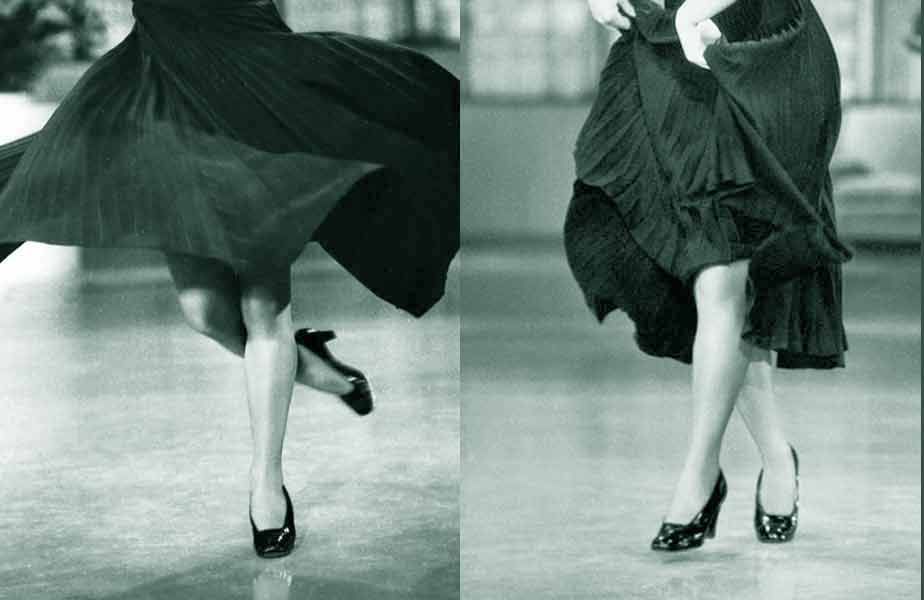 Here, the main fighter for the rights of black artists was the American dancer, actress and anthropologist Katherine Dunham. At 19In the 1930s, she created the Ballet Nègre (which later became the Katherine Dunham Company). Dunham's technique is based not only on classical ballet and modern dance, but also on movements from Caribbean folk dances. Dunham was called the "Queen Mother of Black Dance" and "Catherine the Great of Dance", but no matter how respectful they were to herself, the members of her troupe constantly faced racism: for example, they were asked not to enter through the main entrance of the theater and not to arrive on a common transport with other artists.
Here, the main fighter for the rights of black artists was the American dancer, actress and anthropologist Katherine Dunham. At 19In the 1930s, she created the Ballet Nègre (which later became the Katherine Dunham Company). Dunham's technique is based not only on classical ballet and modern dance, but also on movements from Caribbean folk dances. Dunham was called the "Queen Mother of Black Dance" and "Catherine the Great of Dance", but no matter how respectful they were to herself, the members of her troupe constantly faced racism: for example, they were asked not to enter through the main entrance of the theater and not to arrive on a common transport with other artists.
Another milestone in modern dance's history of liberation from racism is the Alvin Ailey Company. A student of Lester Horton, one of the most famous choreographers of modern dance, Ailee became a soloist in his troupe early on, and at 22, after Horton's death, even led it. Later, Ailey moved from Los Angeles to New York and in 1958 created the Alvin Ailey American Dance Theater troupe there, which accepted African-American dancers.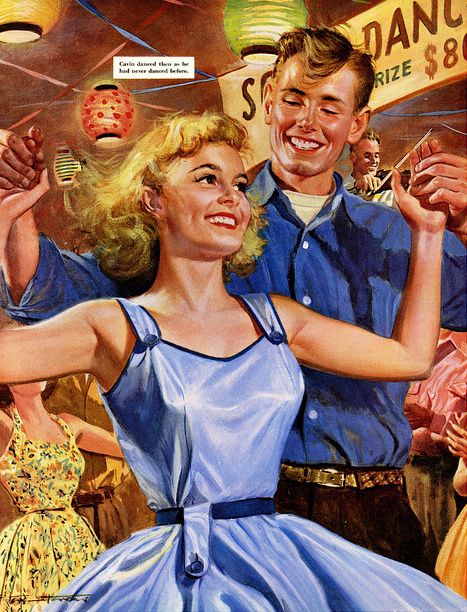 True, once Ailey himself was accused of racism: there was not a single white dancer in his troupe. Now anyone can get into the troupe by passing an audition.
True, once Ailey himself was accused of racism: there was not a single white dancer in his troupe. Now anyone can get into the troupe by passing an audition.
Chief Representatives:
Katherine Dunham, Pearl Primus, Alvin Ailey, Tully Beatty, Arthur Mitchell.
Key productions:
Revelations and Lamentations by Alvin Ailey, Storm by Katherine Dunham.
Can you see it now:
The Dance Theater of Harlem and the Alvin Ailey Company still exist in New York today; in addition, the Alvin Ailey troupe came to Russia several times.
'}, { id: 'samba', text: 'Samba
Carmen Miranda performs "Kai Kai" in Irving Cummings' film "That Night in Rio". 1941 Brazilian rhythms conquered the world more than once: in the early 20th century it was matchish, and in the early 1940s it was samba.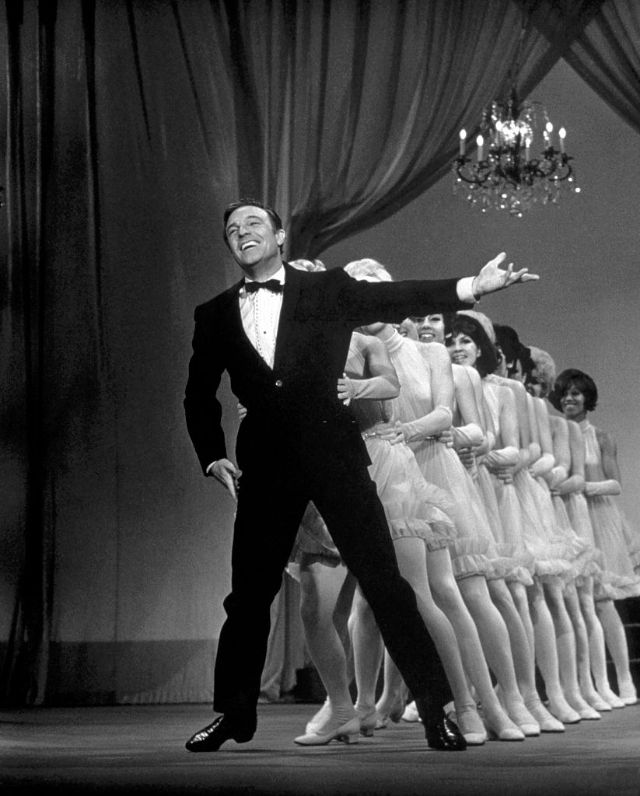
The music-dance culture of former West African slaves in Brazil was integrated fairly early into the dominant Catholic culture. In practice, this meant that West African deities were replaced by Christian saints, and religious processions turned into a colorful multicultural carnival. Samba was born from a traditional ritual in which people (mostly women) fell into a trance as if possessed by spirits. The dance first appeared in carnival processions in 1917 and quickly became an obligatory part of the holidays in Rio. Competitions for this dance were held at special sambadromes the size of a good stadium. The dance achieved worldwide popularity thanks to the singer, actress and dancer Carmen Miranda (1909-1955), who was called the "Brazilian bombshell". Born in Portugal, she moved early to Brazil, and since 1939 lived in the United States, performed on Broadway and starred in Hollywood. Films with her participation, such as "That Night in Rio" (1941), "Weekend in Havana" (1941) and The Whole Gang Assembled (1943), became an outlet for people during the war.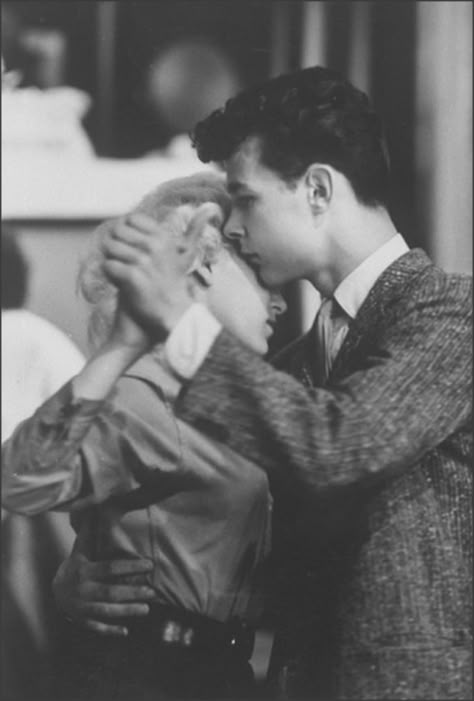
The samba is danced to a syncopated 4/4 rhythm Syncopation - in music, the emphasis is shifted from a stronger beat to a weaker one. with forward and backward steps and swing, swinging movements.
'}, { id: 'merc', text: 'Merce Cunningham (USA)
"Camera Beach Birds" performed by Merce Cunningham Dance Company. Choreography by Merce Cunningham, music by John Cage, video adaptation by Elliot Kaplan. 1993Merce Cunningham is often called a modernist or a postmodernist, but rather he escaped from one and inspired the other, and he himself remained a separate figure in the history of American dance.
Cunningham started dancing with Martha Graham's troupe, but after six years of work, he hated both Graham's technique and her concept of movement - and already in the 1940s he left her and created his own company, where his partner, composer John, did the main administrative work Cage. From Cage, Cunningham borrowed the principle of chance, or aleatorics: for example, from Cage, dice determined the order of periods in a piece of music, and from Cunningham, the order of dance scenes and which of the performers would dance which part. This principle fully corresponded to Cunningham's idea of the need to destroy habitual patterns, to abandon natural and learned movements. At the end of his life, Cunningham became interested in computer technology - he began to create choreography not in the hall, but in the Life Forms and DanceForms programs, and then offered his artists to embody it on stage.
From Cage, Cunningham borrowed the principle of chance, or aleatorics: for example, from Cage, dice determined the order of periods in a piece of music, and from Cunningham, the order of dance scenes and which of the performers would dance which part. This principle fully corresponded to Cunningham's idea of the need to destroy habitual patterns, to abandon natural and learned movements. At the end of his life, Cunningham became interested in computer technology - he began to create choreography not in the hall, but in the Life Forms and DanceForms programs, and then offered his artists to embody it on stage.
Cunningham believed that on the stage all art forms should coexist on equal terms, and not be subordinated to one thing - dance. He worked with avant-garde artists: the music was written by Cage, the costumes were often invented by Warhol, and the set design was Robert Rauschenberg. At the same time, each worked without knowing what the other was doing. Everything was gathered together for the first time in the presence of the public.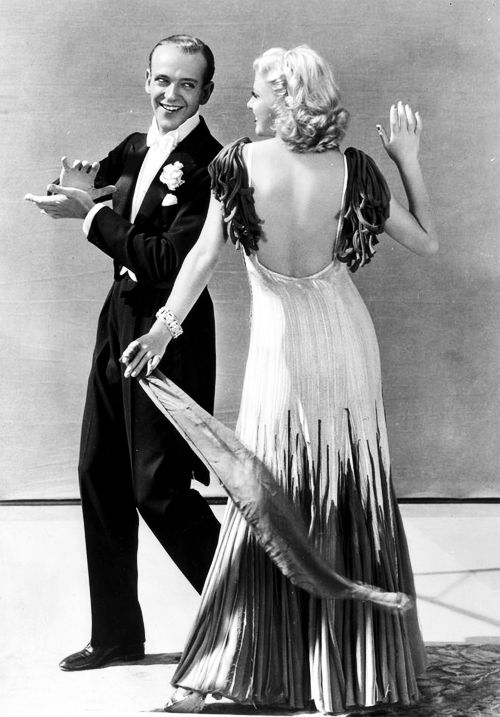 Even artists often found out what movements and in what order they were to perform, just a few minutes before the premiere, and the music was first heard only on stage.
Even artists often found out what movements and in what order they were to perform, just a few minutes before the premiere, and the music was first heard only on stage.
At first, Cunningham's troupe gave one performance a year. Of course, this did not bring enough money. Then friends and like-minded people came to the rescue - for example, Rauschenberg could quickly organize an exhibition, sell all the paintings, and give the money to the development of the troupe.
Key performances:
This is Rainforest, Random Suite. In general, many of Cunningham's productions had abstract titles: "Untitled Work", "Work No. 5", etc. He is also known for his ballets under the general name "Event" ("Event 1", "Event 2", "Event 3" ): these are cuts from different works, adapted to certain spaces. If the production did not fit in the theater or museum where Cunningham was invited, he could quickly modify it.
Can you see it now:
After Cunningham's death in 2009, his troupe was bequeathed to cease to exist.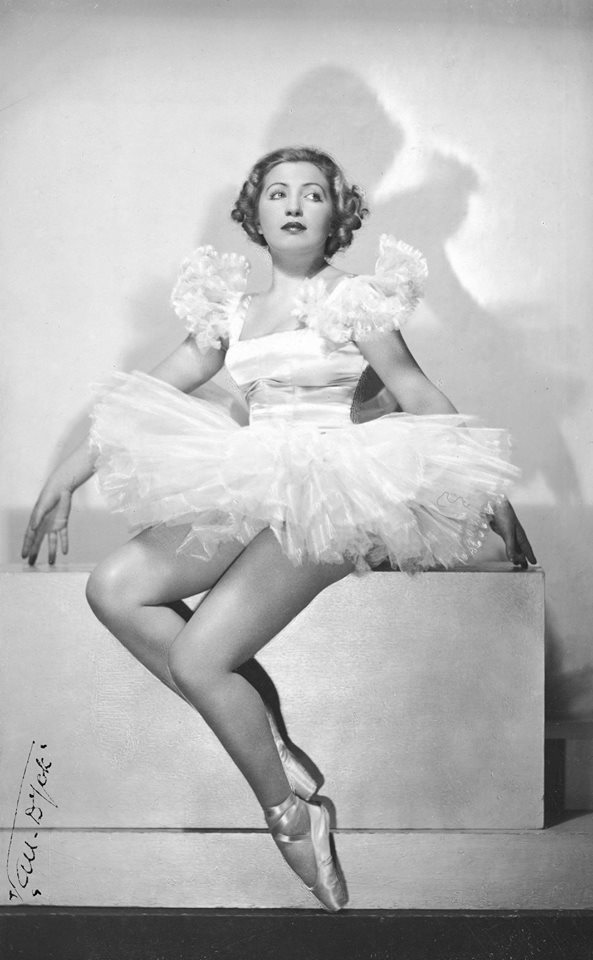 Merce Cunningham Dance Company traveled around the world for two years on a farewell tour (even visiting Russia, for the Chekhov Festival), after which it disbanded. But there is the Merce Cunningham Trust, which preserves the choreographer's legacy. Former artists and tutors make sure that Cunningham's choreography is performed correctly, teach classes in his technique and teach his productions at choreography departments across America. They also do research and hold conferences on Cunningham's work. This fall, as part of the festival "Context. Diana Vishneva" a master class on the Cunningham technique will be held in St. Petersburg.
Merce Cunningham Dance Company traveled around the world for two years on a farewell tour (even visiting Russia, for the Chekhov Festival), after which it disbanded. But there is the Merce Cunningham Trust, which preserves the choreographer's legacy. Former artists and tutors make sure that Cunningham's choreography is performed correctly, teach classes in his technique and teach his productions at choreography departments across America. They also do research and hold conferences on Cunningham's work. This fall, as part of the festival "Context. Diana Vishneva" a master class on the Cunningham technique will be held in St. Petersburg.
Rock and roll
Rock and roll from the Fred F. Sears film "Don't Knock the Rock". 1956 After the war, a whole galaxy of musicians appeared, playing something like accelerated blues.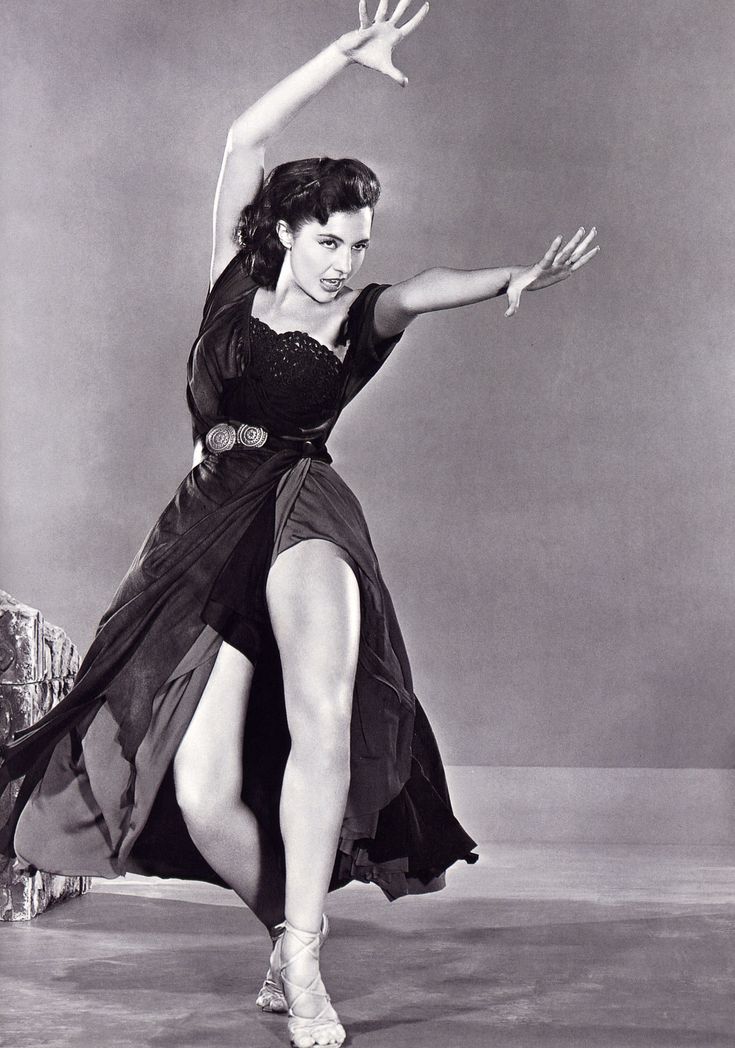 But the first recordings were still not called rock and roll, but were considered an outgrowth of rhythm and blues, which in conservative America was strongly associated with African American music. According to popular belief, the word "rock and roll" in this sense was first used by radio host Alan Fried to put on the air, including for a white audience, the songs of Chuck Berry, Little Richard, Elvis Presley and Jerry Lee Lewis (according to ironically, in African American slang "rock and roll" was called sex).
But the first recordings were still not called rock and roll, but were considered an outgrowth of rhythm and blues, which in conservative America was strongly associated with African American music. According to popular belief, the word "rock and roll" in this sense was first used by radio host Alan Fried to put on the air, including for a white audience, the songs of Chuck Berry, Little Richard, Elvis Presley and Jerry Lee Lewis (according to ironically, in African American slang "rock and roll" was called sex).
They danced to the new music, using all the movements of swing dances, but more energetically and with a greater degree of improvisation. The Hollywood films Rock Around the Clock, Don't Knock the Rock, and The Girl Can't Help It (all released in 1956) finally turned the post-war generation into a rock'n'roll generation. Neither in Europe nor in the USSR could resist the driving rhythms: even the ensemble of Igor Moiseev danced rock and roll - however, in the form of a parody of "bourgeois mores" and under the ironic title "Back to the Monkey".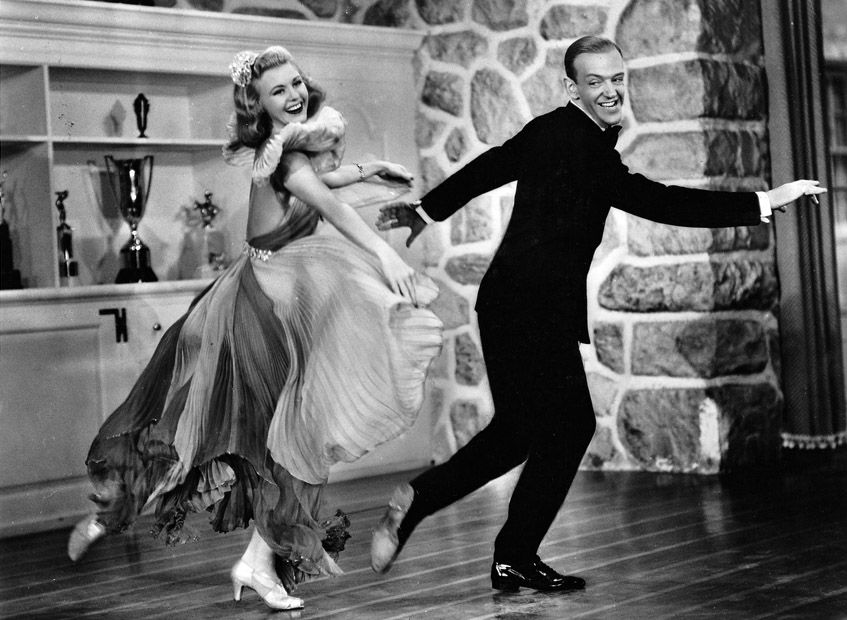
Maurice Béjart and Belgian choreographers
The Rite of Spring staged by Maurice Béjart. 1959Maurice Bejart is the most important figure for both ballet and modern dance. He worked in France, Belgium and Switzerland and, despite the closeness of the USSR, collaborated with Maya Plisetskaya, Ekaterina Maksimova and Vladimir Vasiliev. He lived in Belgium for 30 years starting from 1959, when, desperate to wait for recognition and help from the French authorities, Bejart accepted the invitation of the director of the Theater de la Monnaie to create a ballet troupe in Brussels. His first premiere at the new location was The Rite of Spring, now legendary.
It can be said that thanks to Maurice Béjart, modern dance arose in Belgium: in 1970, he created the Mudra interdisciplinary school of choreography in Brussels, where they taught classical ballet, music, singing, martial arts, and acting.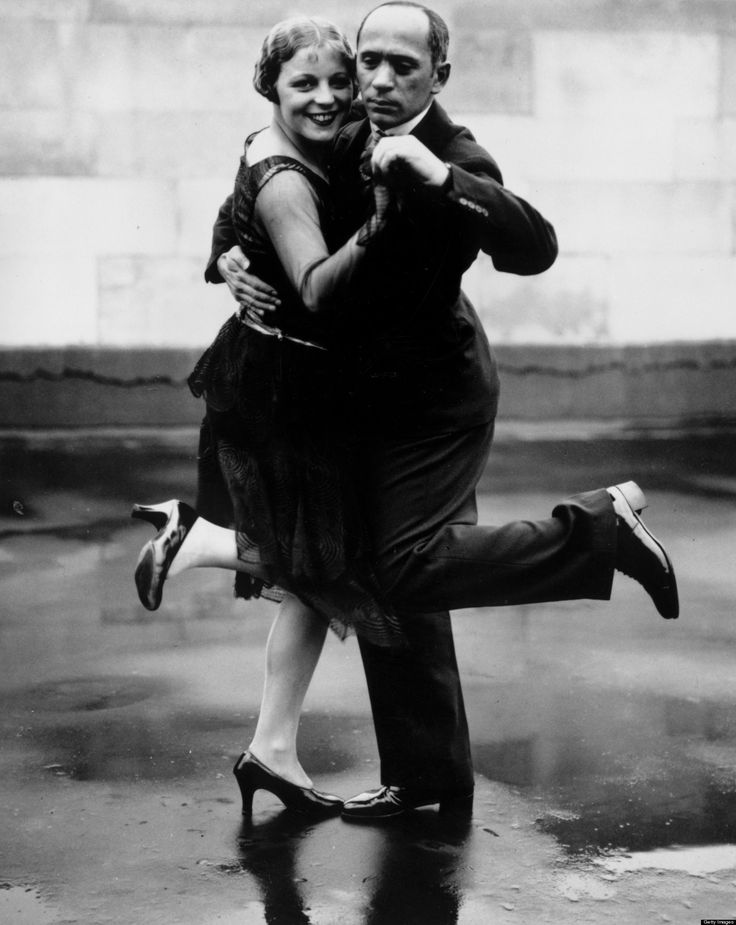 Her graduate Anne Teresa de Kersmaeker became one of the strongest contemporary Belgian choreographers, and at 19In 95, she opened another iconic school, P.A.R.T.S. (Performing Arts Research and Training Studios). In P.A.R.T.S. they also train "synthetic" artists, adding to the set of "Mudra" the repertoire of choreographers of the 20th century - from William Forsythe to Pina Bausch.
Her graduate Anne Teresa de Kersmaeker became one of the strongest contemporary Belgian choreographers, and at 19In 95, she opened another iconic school, P.A.R.T.S. (Performing Arts Research and Training Studios). In P.A.R.T.S. they also train "synthetic" artists, adding to the set of "Mudra" the repertoire of choreographers of the 20th century - from William Forsythe to Pina Bausch.
Today, Belgium is one of the centers of modern dance, whose troupes and schools dream of entering artists from all over the world. At the same time, there is no Belgian dance school as such - each choreographer has his own style. For example, Anne Teresa de Kersmaeker studies the connection between music and choreography, as well as the geometric patterns of dance; Wim Vandekeybus brings dance to film, leading the way in the film dance world; Sidi Larbi Cherkaoui combines Eastern and Western cultures in her works.
Principal representatives:
Maurice Béjart, Anne Teresa de Kersmaeker, Alain Platel, Wim Vandekeybus, Sidi Larbi Cherkaoui.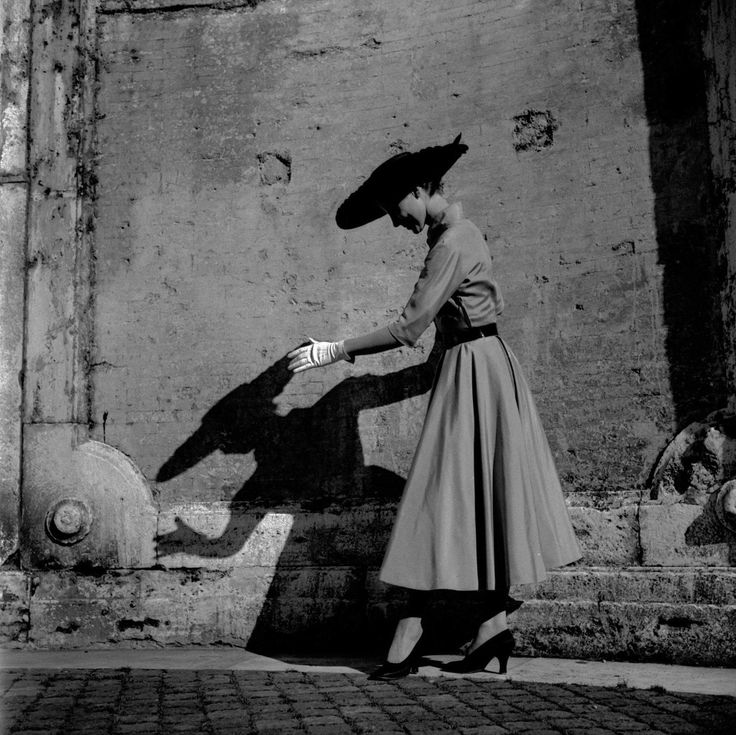
Key productions:
The Rite of Spring, Bolero, Mass for the Present and Symphony for One by Maurice Béjart; "Phases" and "Rosas danst rosas" by Anne Teresa de Kersmaeker; "Blush" by Wim Vandekeybus; "Sutra" by Sidi Larbi Cherkaoui; “Good afternoon, madam, how are you today, the weather is fine, it will undoubtedly rain, and so on.” Alain Platel.
Can it be seen now:
Bejart's troupe, having moved from Brussels to Lausanne, changed its name from "Ballet of the 20th century" to "Béjart's Ballet in Lausanne" - and is developing quite fruitfully (after Bejart's death in 2007 - under the guidance of his student Gilles Roman). In Belgium, de Kersmaker with his Rosas troupe, Vandekeybus and Ultima Vez, Alena Platel and Les ballets C de la B, Sidi Larbi Cherkaoui and Eastman - and many others, less famous. And Sidi Larbi Cherkaoui's ballet "I Will Fall for You" ("I will love you") can be seen this fall in Moscow and St. Petersburg at the "Context. Diana Vishneva.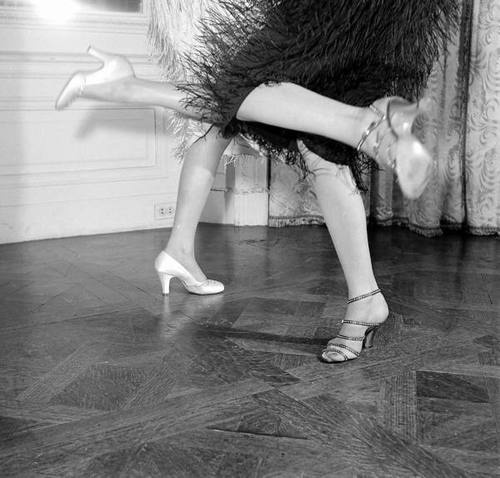
Twist
Twist to the song "Let's Twist Again" performed by Chubby CheckerTwist began to dance at the very end of the 1950s, but after 19-year-old African-American Chubby Checker (real name Chubby Checker) - Ernest Evans) performed the song "The Twist" with the American Bandstand, America literally went crazy (this phenomenon - the instant and short-term popularity of dance - was even given the name dance craze ), and behind it the whole world. Three years later, Checker cemented his success with the single "Let's Twist Again".
The Twist completed a long evolution of club dances that gradually moved from dance in close contact with a partner to an individual dance. Even in rock and roll, a couple held hands (even if only touching each other with their fingertips), and in a twist, a partner is no longer necessary in principle.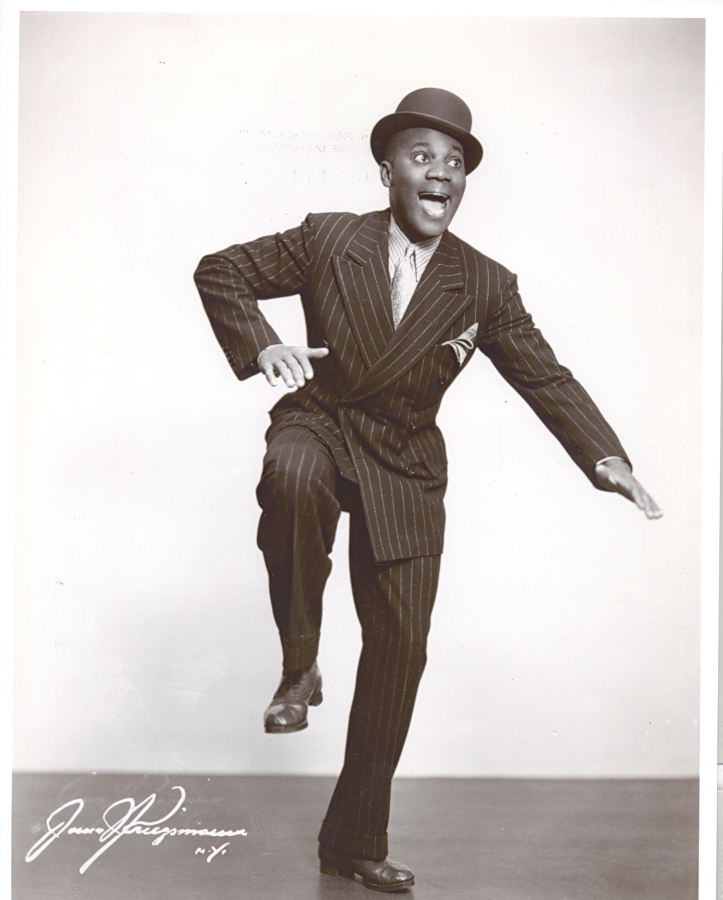 And, most importantly, the dance was unusually simple to perform: with the supporting foot you need to make a movement, as if crushing a cigarette butt with the sole; while the other leg swings. The hips are included in the movement, and the hands work as if rubbing the back with a towel after a shower. Among other things, these movements do not need much space: the twist could be danced in your own bedroom or in a cramped nightclub.
And, most importantly, the dance was unusually simple to perform: with the supporting foot you need to make a movement, as if crushing a cigarette butt with the sole; while the other leg swings. The hips are included in the movement, and the hands work as if rubbing the back with a towel after a shower. Among other things, these movements do not need much space: the twist could be danced in your own bedroom or in a cramped nightclub.
Postmodern Dance (USA)
"Water Motor" Trisha Brown. 1978 Unlike many other phenomena in art, postmodern dance has a date of birth. It's July 6, 1962, the day Judson Memorial Baptist Church hosted "Dance Concert (#1)" in which students from Robert Dunn's composition class showed their work created over two years of class.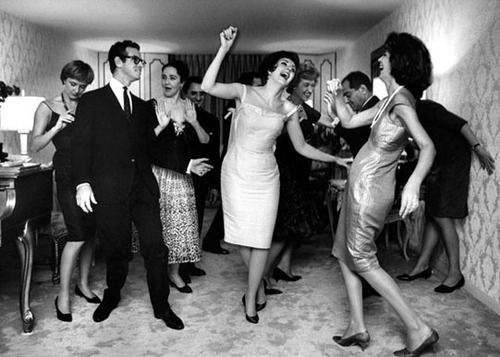 They called themselves postmodernists, thus renouncing the hated modern dance, which, in their opinion, replaced the old rules with new ones, instead of abandoning them altogether. The famous "No Manifesto", written by one of the most prominent representatives of this trend, Yvonne Rainer, speaks of liberation: no need to dance for the audience, no need to learn and be able to dance to express your feelings, no need to play princesses or heroes, no need dance to tell stories. Live yourself, here and now. Dance in the park, dance to what is happening around, experiment.
They called themselves postmodernists, thus renouncing the hated modern dance, which, in their opinion, replaced the old rules with new ones, instead of abandoning them altogether. The famous "No Manifesto", written by one of the most prominent representatives of this trend, Yvonne Rainer, speaks of liberation: no need to dance for the audience, no need to learn and be able to dance to express your feelings, no need to play princesses or heroes, no need dance to tell stories. Live yourself, here and now. Dance in the park, dance to what is happening around, experiment.
Principal representatives:
Trisha Brown, Yvonne Reiner, Steve Paxton, Meredith Monk, Deborah Hay, Lucinda Childs, Anna Halprin, etc.
Key productions:
"Trio A" and "We'll Run" by Yvonne Reiner; "The Man Walking Down the Wall" and "The Accumulation" by Trisha Brown.
Can you see it now:
By the 1990s, postmodern dance had come to naught: some of the founders went to Broadway to earn money, someone became interested in music, someone switched from performances to performances. But nevertheless, there is a trace of postmodernism in modern choreography, and a very bright one: for example, contact improvisation created by Steve Paxton is still a fundamental dance discipline.
But nevertheless, there is a trace of postmodernism in modern choreography, and a very bright one: for example, contact improvisation created by Steve Paxton is still a fundamental dance discipline.
Hustle
Clip "The Hustle" by Van McCoy. 1970s The music and dance style of disco (from the English disc - "vinyl record") developed in the late 1960s - early 1970s, when in clubs instead of jazz bands and rock bands playing live music started spinning the records. A nightclub in Paris, on Rue Yuchette, where a whole library of discs was collected, began to be called "Disco". The disco style absorbed many different influences: jazz, rhythm and blues, soul, gospel, Latino, so that as a result everyone could find something to their liking in it. The generation of loners, "atomized individuals", could not help but like the fact that disco can be danced without physical contact and that the dancer is given complete freedom of action. The musicians who created the style are Donna Summer, Gloria Gaynor, Van McCoy, the Bee Gees.
The musicians who created the style are Donna Summer, Gloria Gaynor, Van McCoy, the Bee Gees.
Van McCoy's disco hit "The Hustle" gave rise to the dance of the same name (which, however, is usually danced in pairs). Hustle has absorbed Latin American rhythms and its rhythmic structure is similar to two-step or lindy hop - dances in which two steps are taken for each measure. The basic structure of the steps is complemented by improvised movements, which makes any dancing couple unique, unlike any other.
'}, { id: 'pina', text: 'Pina Bausch (Germany)
Café Müller directed by Pina Bausch. 1980s Pina Bausch is probably the most famous choreographer of the 20th century. She was a student of Kurt Joss and later a soloist in his Folkwang Ballet troupe. There she began to independently invent choreography for herself (according to her, she was not going to become a choreographer, but she wanted to dance more), and in 1969 she became the artistic director of the theater.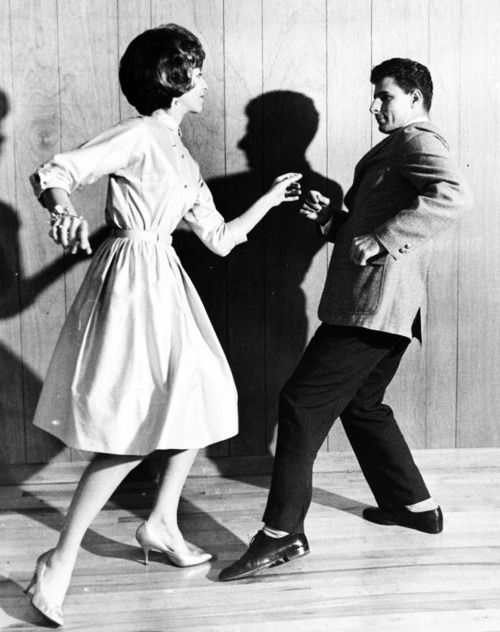 In 1973, she was invited to lead the ballet troupe of the opera house in Wuppertal, and soon the troupe separated into a separate dance company - the Wuppertal Dance Theater. Dance theater is a genre invented by Kurt Joss, in which ballet, opera, and drama are mixed on stage. In the performances of Pina Bausch, the artist can dance, and in a minute pick up the accordion and sing. Or smoke and start talking about your childhood. Pina often asked her artists to think about something and show their story at the next rehearsal. From such scraps, she could put together a whole performance.
In 1973, she was invited to lead the ballet troupe of the opera house in Wuppertal, and soon the troupe separated into a separate dance company - the Wuppertal Dance Theater. Dance theater is a genre invented by Kurt Joss, in which ballet, opera, and drama are mixed on stage. In the performances of Pina Bausch, the artist can dance, and in a minute pick up the accordion and sing. Or smoke and start talking about your childhood. Pina often asked her artists to think about something and show their story at the next rehearsal. From such scraps, she could put together a whole performance.
Pina Bausch's Dance Theater became famous for The Rite of Spring, a ballet that she staged at the very beginning of the troupe's existence (choreographers usually come to him only at the peak of their career). Her version explores the clash between man and society: in the sacrifice scene, the Chosen One, unlike the classical version, is not ready to give her life for the sake of the fertility of the earth, but fights to the last for her right to have a voice.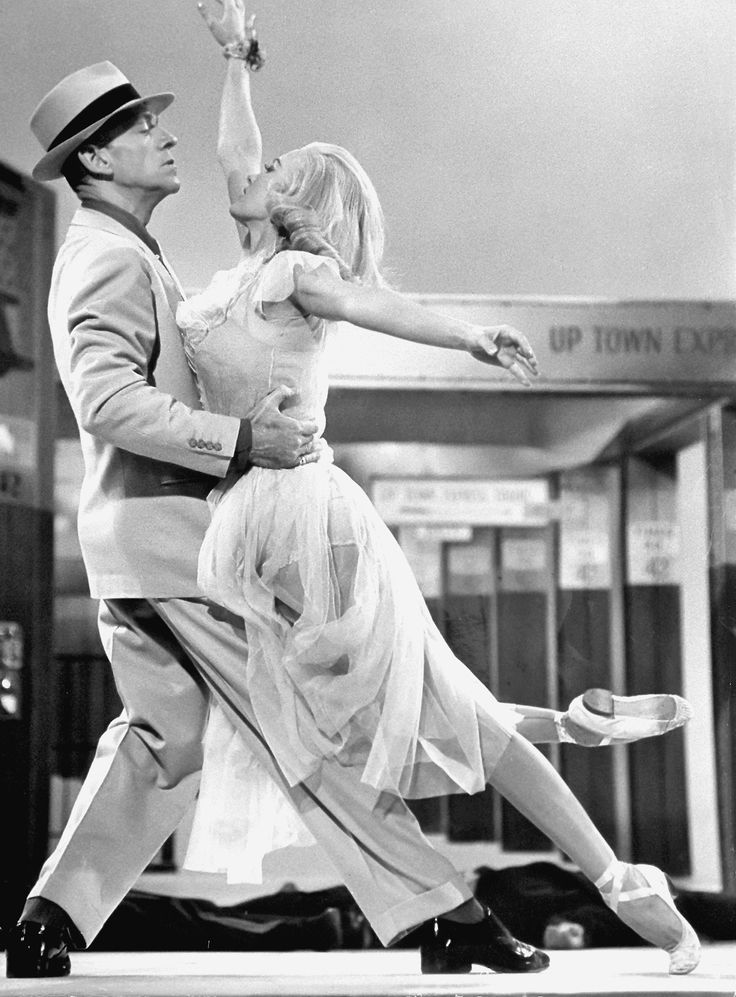 Of course, the audience could not help but be impressed by one of the scenographic solutions: the actors of the Dance Theater are dancing literally smeared in the ground.
Of course, the audience could not help but be impressed by one of the scenographic solutions: the actors of the Dance Theater are dancing literally smeared in the ground.
In 2011, Wim Wenders released the film Pina, which made her the most famous contemporary dance choreographer today.
Key performances:
The Rite of Spring, Café Müller, Carnations, The Window Cleaner, Kontakthof (in the 2000 version, older people dance, and in the 2008 version, teenagers).
Can you see it now:
The dance theater in Wuppertal continues its work. The performances of Pina Bausch "The Rite of Spring" and "Orpheus and Eurydice" are in the repertoire of the Paris Opera.
'}, { id: 'mats', text: 'Mats Ek (Sweden)
The House of Bernard Alba directed by Mats Ek. 1978 Swedish choreographer, creator of his own style of dance, partly inspired by modern dance and the work of Martha Graham.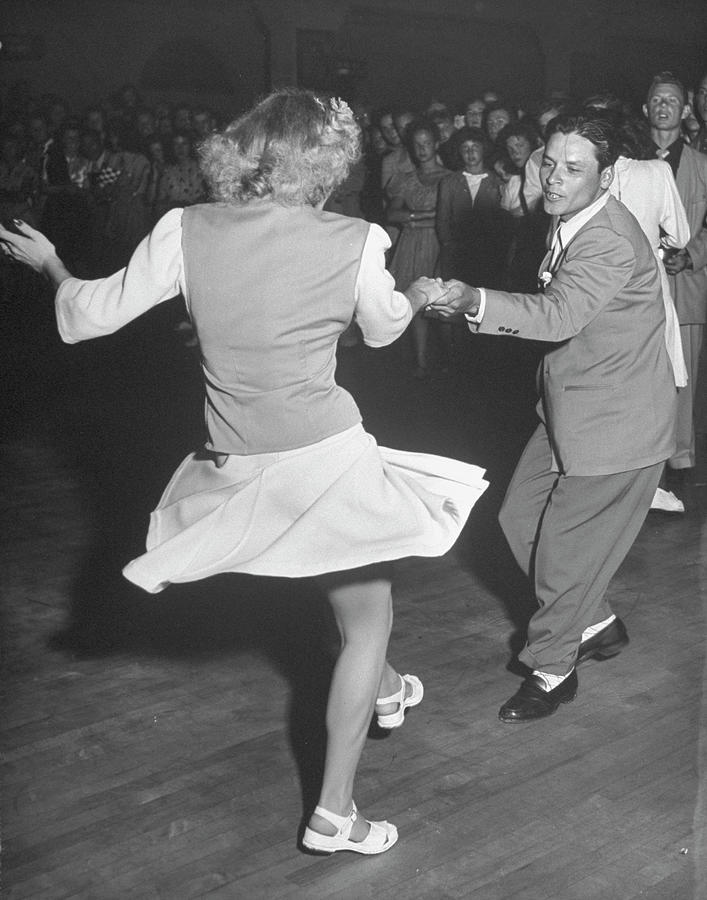 For many years he was the principal choreographer of Sweden's leading troupe, the Kulberg Ballet, which was created by his mother, Birgit Kulberg.
For many years he was the principal choreographer of Sweden's leading troupe, the Kulberg Ballet, which was created by his mother, Birgit Kulberg.
Ek came to dance relatively late - he was already 20 years old. He staged many classical ballets, but seriously reworked their plots. So, his Sleeping Beauty falls not into a magical dream, but into a narcotic one, and in Swan Lake, instead of beautiful swans, cackling ducks dance. In "Giselle", which glorified Ek at 1982, the main character at the end of the first act goes crazy, and does not die, and therefore the action of the second act is transferred from the cemetery to the psychiatric hospital.
In most of Ek's ballets, his wife, the ballerina Ana Laguna, was the soloist, but he also worked with other ballet stars, such as Mikhail Baryshnikov and Sylvie Guille.
Key performances:
Giselle, Carmen, Smoke, Place, House of Bernard Alba, Axe.
Can you see it now:
In 2016, Mats Ek unexpectedly announced that he was putting an end to his career and would not renew contracts with the theaters in which his productions are staged, because he believes that without his personal control, the performances will cease to be his works.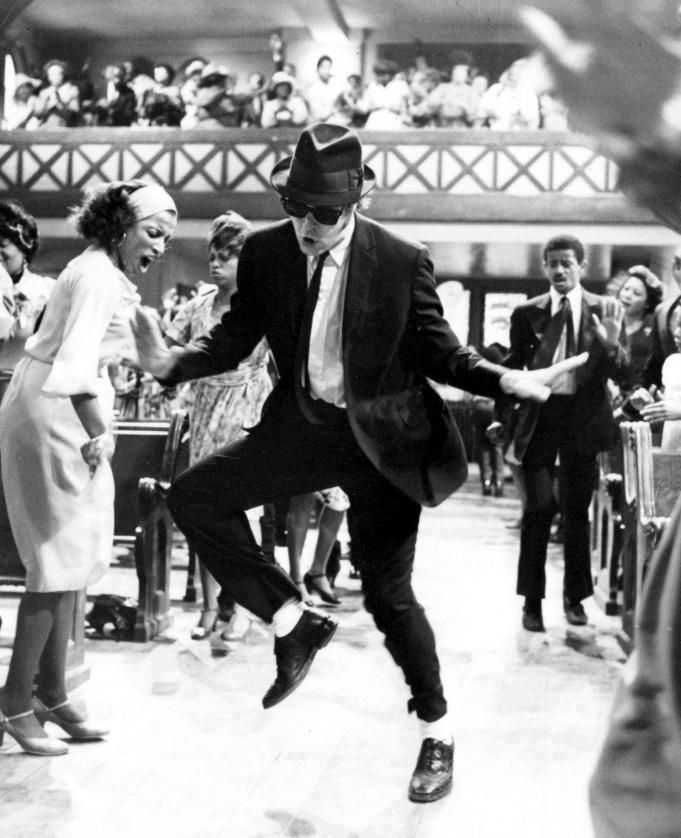 All over the world, this statement met with a lively reaction, dividing Ek's fans into two camps: some agree with the choreographer, others believe that, having shown the work to the public, he can no longer consider it his property. In any case, the best casts of his productions (with Ana Laguna) are recorded on video.
All over the world, this statement met with a lively reaction, dividing Ek's fans into two camps: some agree with the choreographer, others believe that, having shown the work to the public, he can no longer consider it his property. In any case, the best casts of his productions (with Ana Laguna) are recorded on video.
Hip-hop
Afrika Bambaataa & The Soul Sonic Force with "Planet Rock". 1982 In the 1970s, DJs started not just playing records on turntables, but using turntables to create music (for example, by repeating some musical fragments from discs). DJs appeared on the radio; new, electronic music sounded. In New York, in the South Bronx, the first hip-hop style arose - breakdance, break. This athletic dance combined fast footwork with acrobatic spins on the head, back and arms.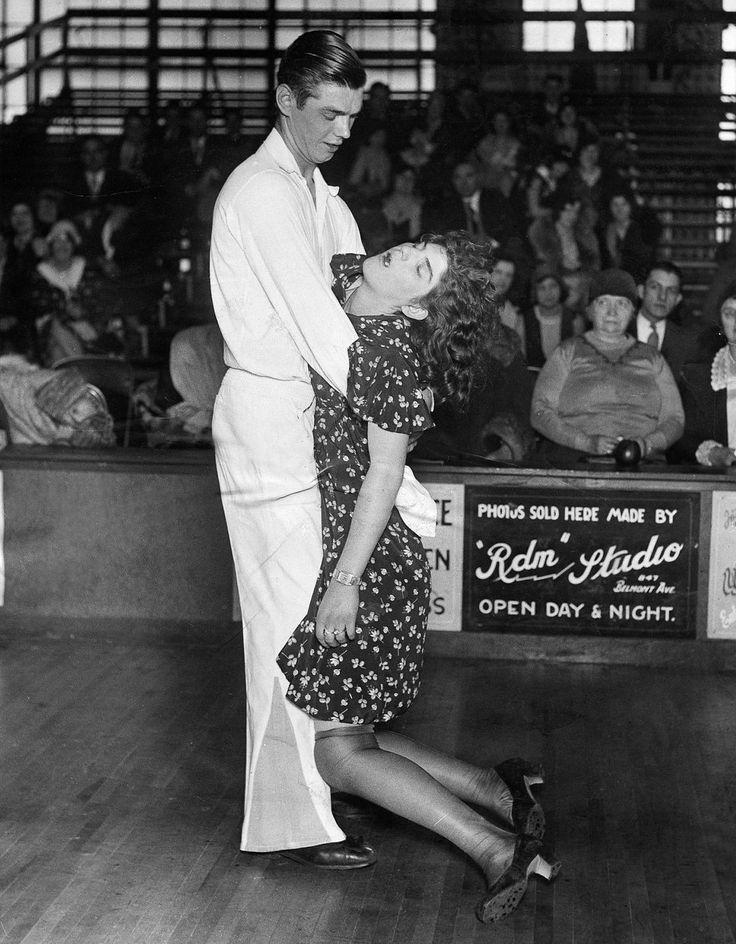 They were supplemented by intermittent robotic movements of freezing (from the English freeze - “freeze”) and locking, as well as smoother popping movements - as if an electric current passes through different parts of the body. Following the b-boys (Crazy Legs, Prince Ken Swift, Orko), b-girls appeared (one of the first was Japanese-born Masami).
They were supplemented by intermittent robotic movements of freezing (from the English freeze - “freeze”) and locking, as well as smoother popping movements - as if an electric current passes through different parts of the body. Following the b-boys (Crazy Legs, Prince Ken Swift, Orko), b-girls appeared (one of the first was Japanese-born Masami).
In the 1980s, along with popular rap, the so-called old school hip-hop came to the dance floors - more inclusive, with more emphasis on footwork, rather than acrobatics; new pas appear: robocop, roger rabbit, running man.
'}, { id: 'newfrance', text: 'New French dance and non-dance
"Annunciation" by Angelin Preljocaj. 1996 In France, modern dance appeared very late: the influence of classical ballet was too strong. Up to 19In the 70s, non-classical dance was practiced almost secretly, in gyms, after the main work.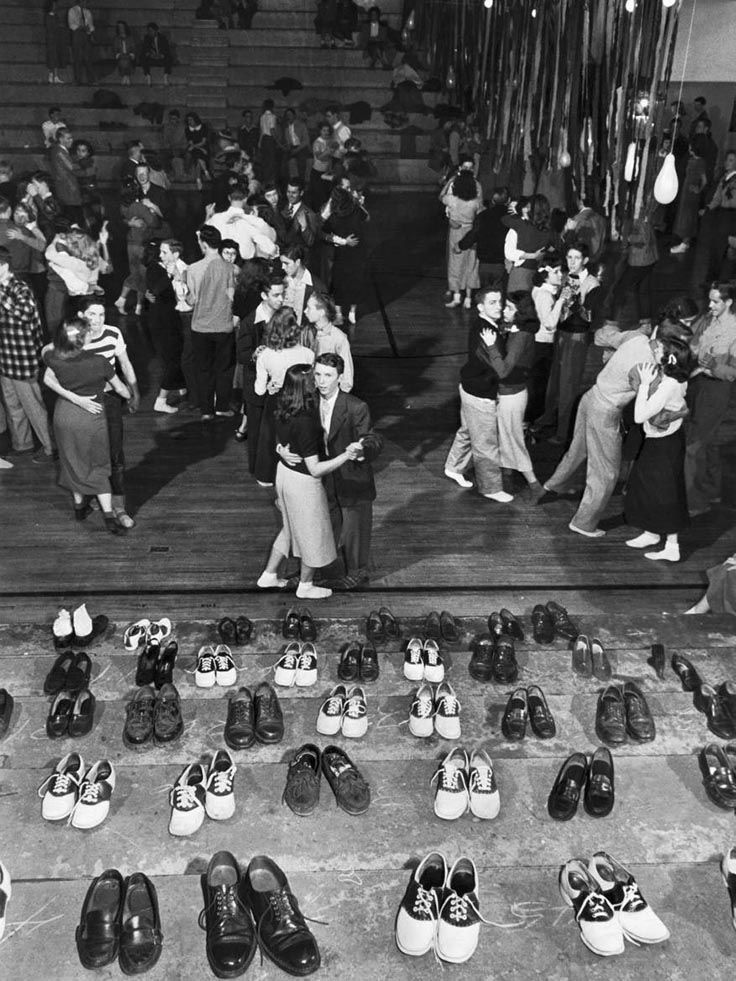 In 1968, student strikes shook Europe, forcing them to reconsider some values in art, and modern dance was suddenly able to enter the real scene. And in the 1980s and 90s, the so-called dance decentralization began in France: professional dance centers were created throughout the country, headed by young choreographers: Dominique Bagouet, Angelin Preljocaj, Magy Marin, Joseph Nudge and others. The task of this cultural policy was to eliminate the division between provincial and metropolitan art, which is considered more professional.
In 1968, student strikes shook Europe, forcing them to reconsider some values in art, and modern dance was suddenly able to enter the real scene. And in the 1980s and 90s, the so-called dance decentralization began in France: professional dance centers were created throughout the country, headed by young choreographers: Dominique Bagouet, Angelin Preljocaj, Magy Marin, Joseph Nudge and others. The task of this cultural policy was to eliminate the division between provincial and metropolitan art, which is considered more professional.
In addition, in the 1980s and 90s, another direction grew out of the new French dance, which is often called the French analogy of American postmodernism - the so-called non-dance (or non-danse). Almost all of its representatives (primarily Jerome Belle, Boris Charmats, Xavier Le Roy) are students or students of students of the creators of the new French dance, who have an excellent choreographic base, but dance for them is no longer the main means of artistic expression: they are moving further and further move away from choreography, using dramatic acting and improvisation, singing and stand-up, video projections and computer graphics in their performances and performances.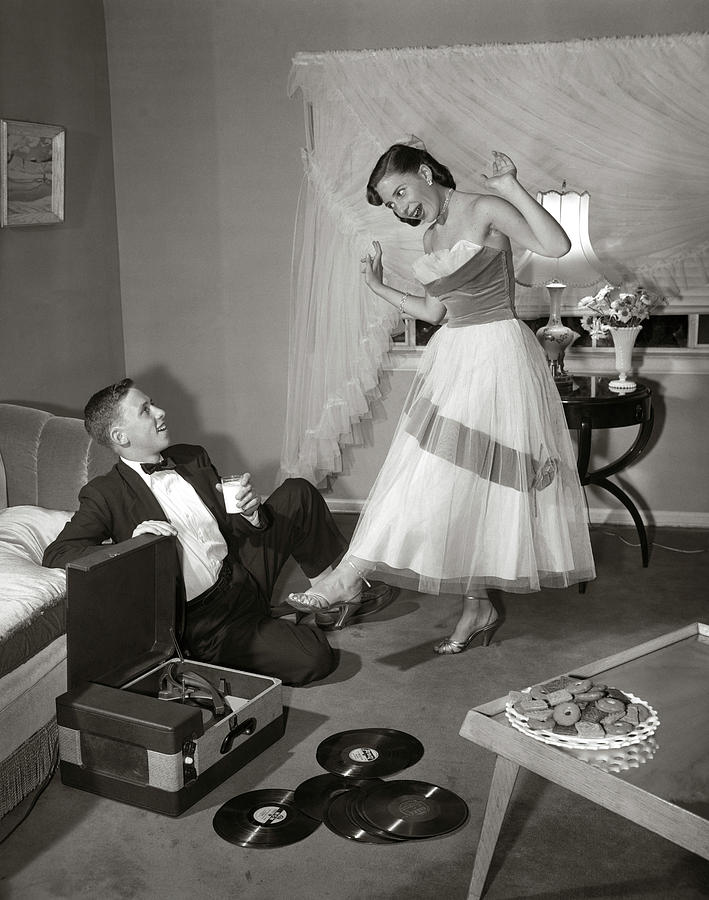
Principal Representatives:
Dominique Bagouet, Angelin Preljocaj, Magy Marin, Jean-Claude Gallotta, Régine Chopineau, Joseph Nudge, Jérôme Belle, Boris Charmats, Xavier Le Roy.
Key productions:
Leap of an angel by Dominique Bagouet, May B by Magy Marin, Defile by Regina Chopineau, Romeo and Juliet by Preljocaj, Gala and Véronique Doisneau by Jérôme Bel, Aatt enentionon and "50 Years of Dance" by Boris Sharmats, "The Rite of Spring" and "Self Unfinished" by Xavier Le Roy.
Can you see now:
There are now 19 National Choreographic Centers in France (for example, in Lyon, Grenoble, La Rochelle, Aix-en-Provence), where modern dance continues to develop, and the troupes of Preljocaj, Gallotta, Naja and others remain one of the strongest in the country . Representatives of non-dance also work hard and even come to Russia quite often
'}, { id: 'lambada', text: 'Lambada and macarena
Lambada by Kaoma. 1989The year 1989, when the Berlin Wall collapsed and the Soviet Union began to crack, was colored by the sounds of a lambada performed by Kaoma. This Latin American dance is a direct descendant of the matchish: the same fast pace, the same, if not more erotic movements. Like the "Brazilian tango", the lambada came from Rio. And its melody, like the melody of a match, was quickly played to the point of soreness.
A similar story happened in the middle of the 1990s with macarena. First, the Spanish pop duo Los del Río performed a song about a girl named Macarena (Magdalena). Written in the musical clave rhythm typical of frantic Afro-Cuban music, the song became an instant hit. And not just the song: the video featured a simple dance with a set of moves perfectly adapted to be performed together in the cramped disco.
'}, { id: 'gaga', text: 'Gaga (Israel)
Fragment of the performance "Deca Dance" directed by Ohad Naharin. 2000The Batsheva Dance Company in Tel Aviv was opened by Martha Graham and Baroness Batsheva de Rothschild back in 1964, but it became a real center of modern dance in the 1990s, when it was headed by Ohad Naharin. Nakharin is probably the most influential modern choreographer, with whom both ballet and modern dancers dream of collaborating, and his work is shown in all the major theaters in the world.
Ohad Naharin created his own choreographic language called gaga. According to the choreographer himself, gaga is not a style of choreography, but a way of movement. Gaga practices in a room without mirrors (although mirrors are usually necessary for the world of dance as an element of self-control), outsiders are not allowed to practice, and the teacher dances, merging with her students. There are classes "Gaga / Dancers" (Gaga / Dancers), where professionals are engaged, and "Gaga / People" (Gaga / People), where you can come with any dance training.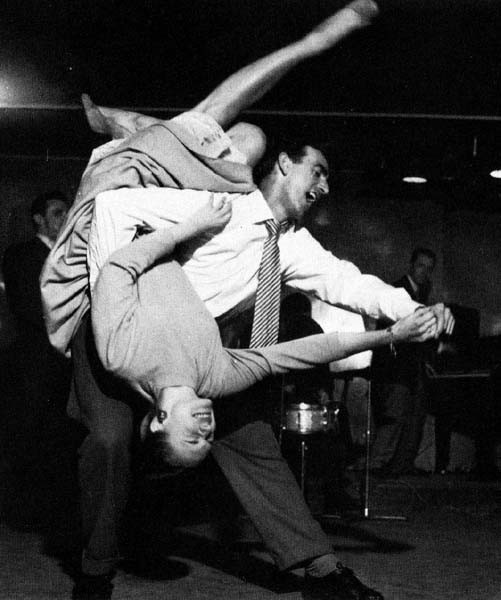 The gaga's task is to feel your body, to feel every molecule of your body, to be both in your body and outside it, without losing your self-irony. This is one of the most popular techniques today.
The gaga's task is to feel your body, to feel every molecule of your body, to be both in your body and outside it, without losing your self-irony. This is one of the most popular techniques today.
Chief Representative:
Ohad Naharin
Key Performances:
Tabula Rasa, Virus of Naharin, Deca Dance, Last Work.
Can you see it now:
In 2017, Naharin announced that he would step down as director of the troupe in September 2018 and be replaced by Gili Navot, a former dancer and tutor at Batsheva. The company actively tours around the world, but its main site is still located in Tel Aviv.
'}, { id: 'england', text: 'Modern dance in England
Sacred monsters. Directed and choreographed by Akram Khan. Danced by Sylvie Guillem and Akram Khan England, like France, came to modern dance rather late: in the 20th century, the country lived on classical ballet (which was created in the 1950s and 60s by choreographers Frederick Ashton and Kenneth Macmillan).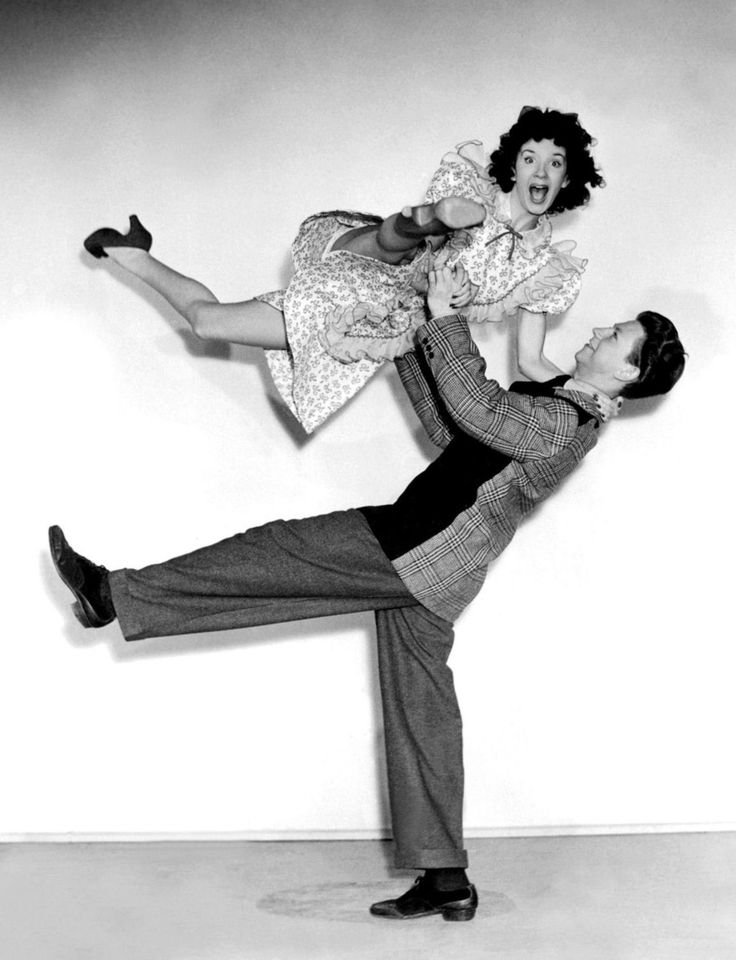 Nevertheless, today's English choreographers occupy leading positions in the world of modern dance - although the majority work with the classical repertoire in one way or another. Matthew Bourne does this in the most daring way: in Swan Lake, all the swans are performed by men, and Siegfried's family and retinue directly parody members of the British royal family; the ballet "Scottish Dance" is a comic retelling of the "La Sylphide" at an accelerated pace. Wayne McGregor can be called the philosopher of English modern dance: his mathematically complex choreography is often plotless and replete with visual and computer effects. Akram Khan, who also worked with the great ballerina Sylvie Guillem, mixes modern dance and Indian Kathak dance in his works.
Nevertheless, today's English choreographers occupy leading positions in the world of modern dance - although the majority work with the classical repertoire in one way or another. Matthew Bourne does this in the most daring way: in Swan Lake, all the swans are performed by men, and Siegfried's family and retinue directly parody members of the British royal family; the ballet "Scottish Dance" is a comic retelling of the "La Sylphide" at an accelerated pace. Wayne McGregor can be called the philosopher of English modern dance: his mathematically complex choreography is often plotless and replete with visual and computer effects. Akram Khan, who also worked with the great ballerina Sylvie Guillem, mixes modern dance and Indian Kathak dance in his works.
Chief Representatives:
Wayne McGregor, Akram Khan, Christopher Wheeldon, Matthew Bourne.
Key productions:
Swan Lake by Matthew Bourne, Chroma by Wayne McGregor, Sacred Monsters by Akram Khan.
Can you see it now:
These choreographers often come to Russia.